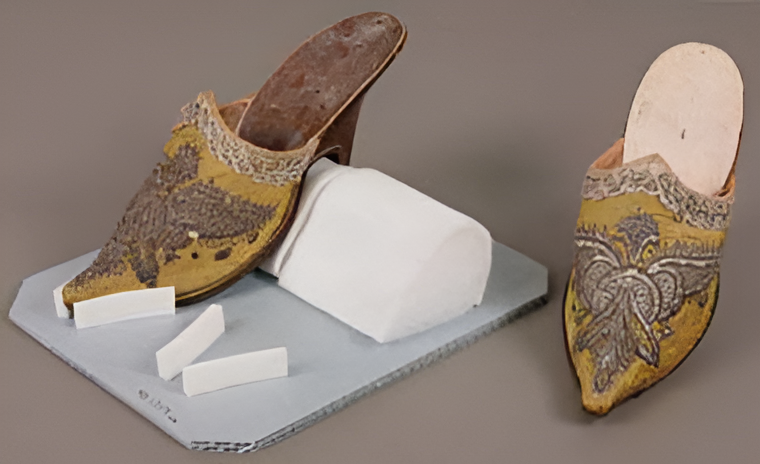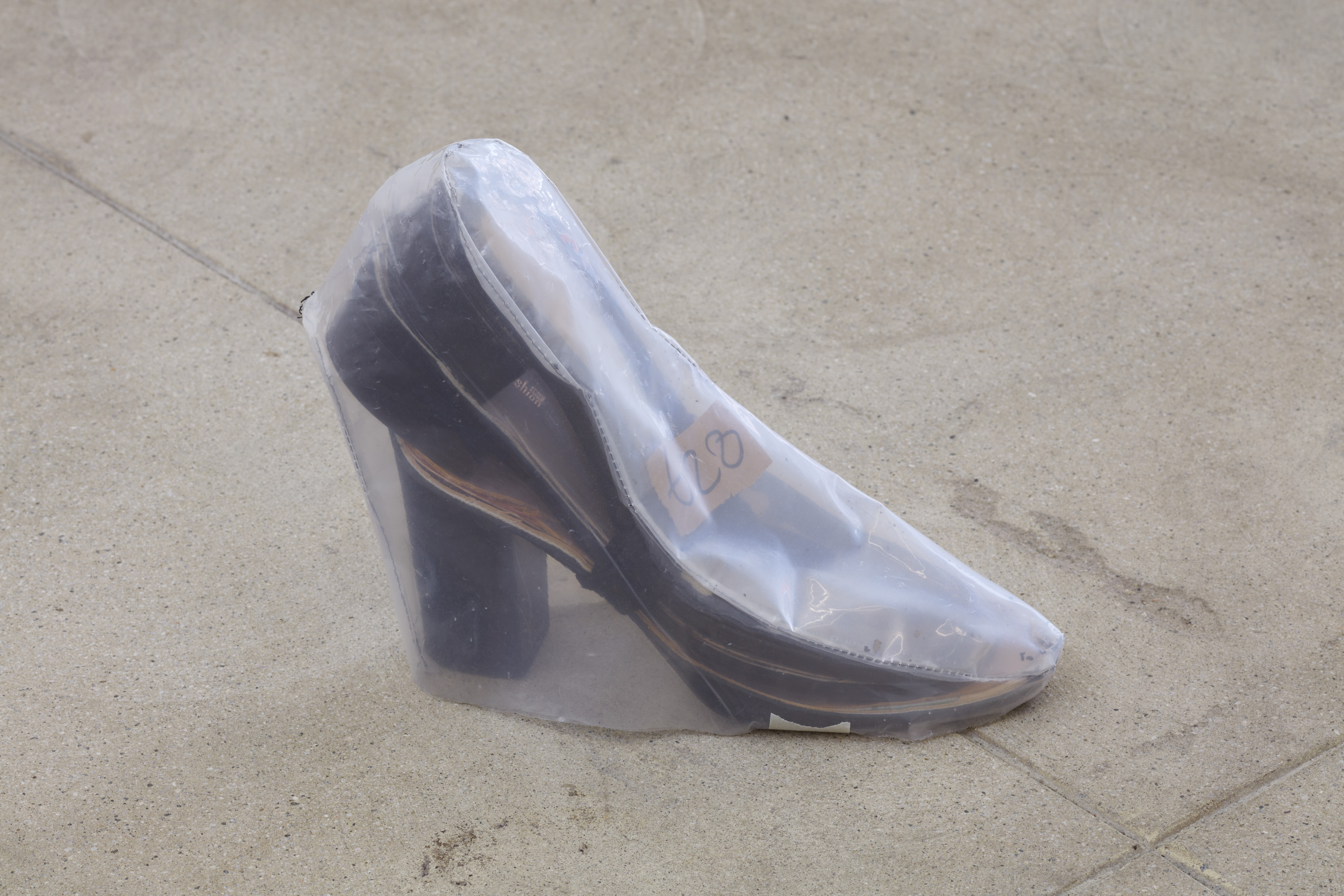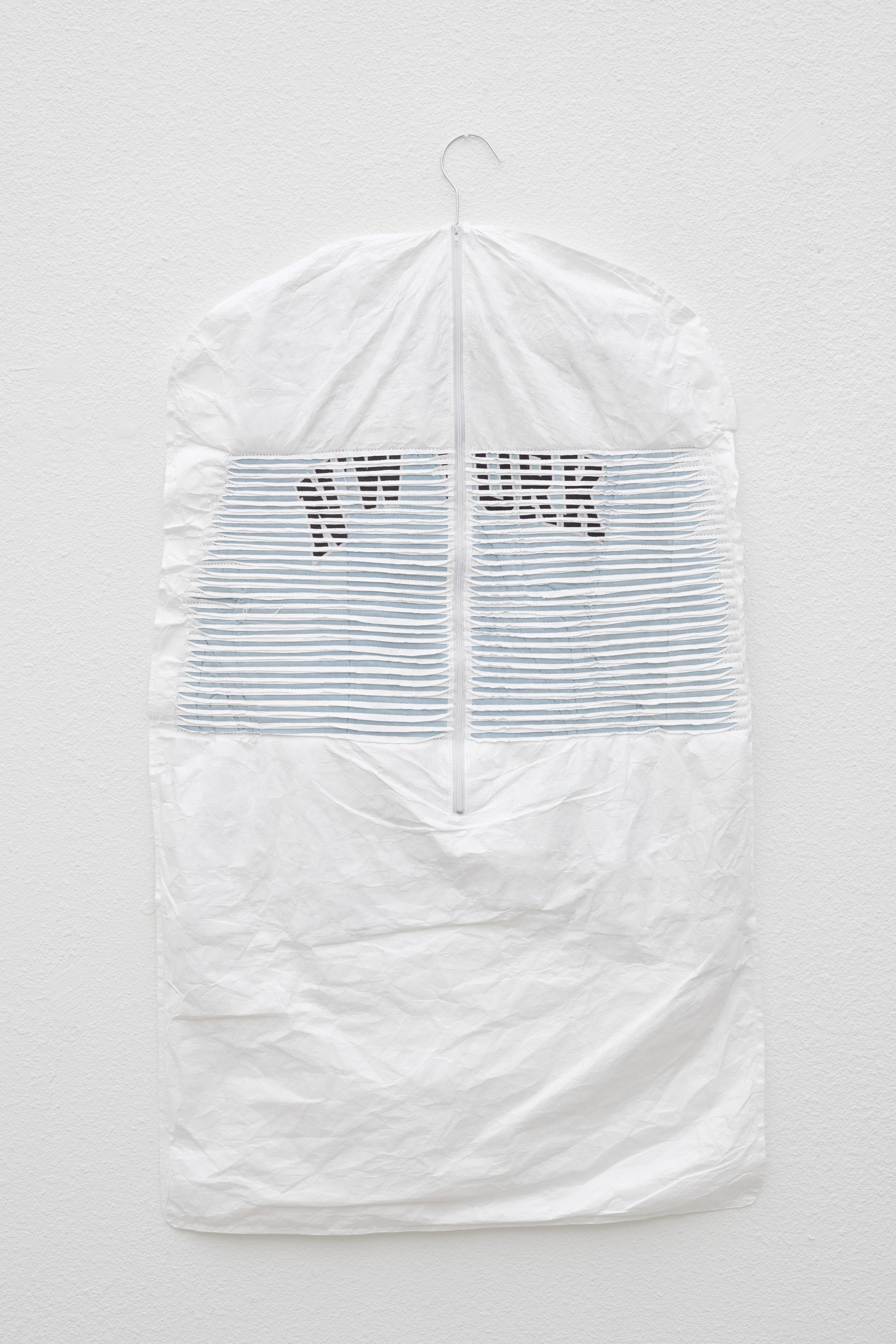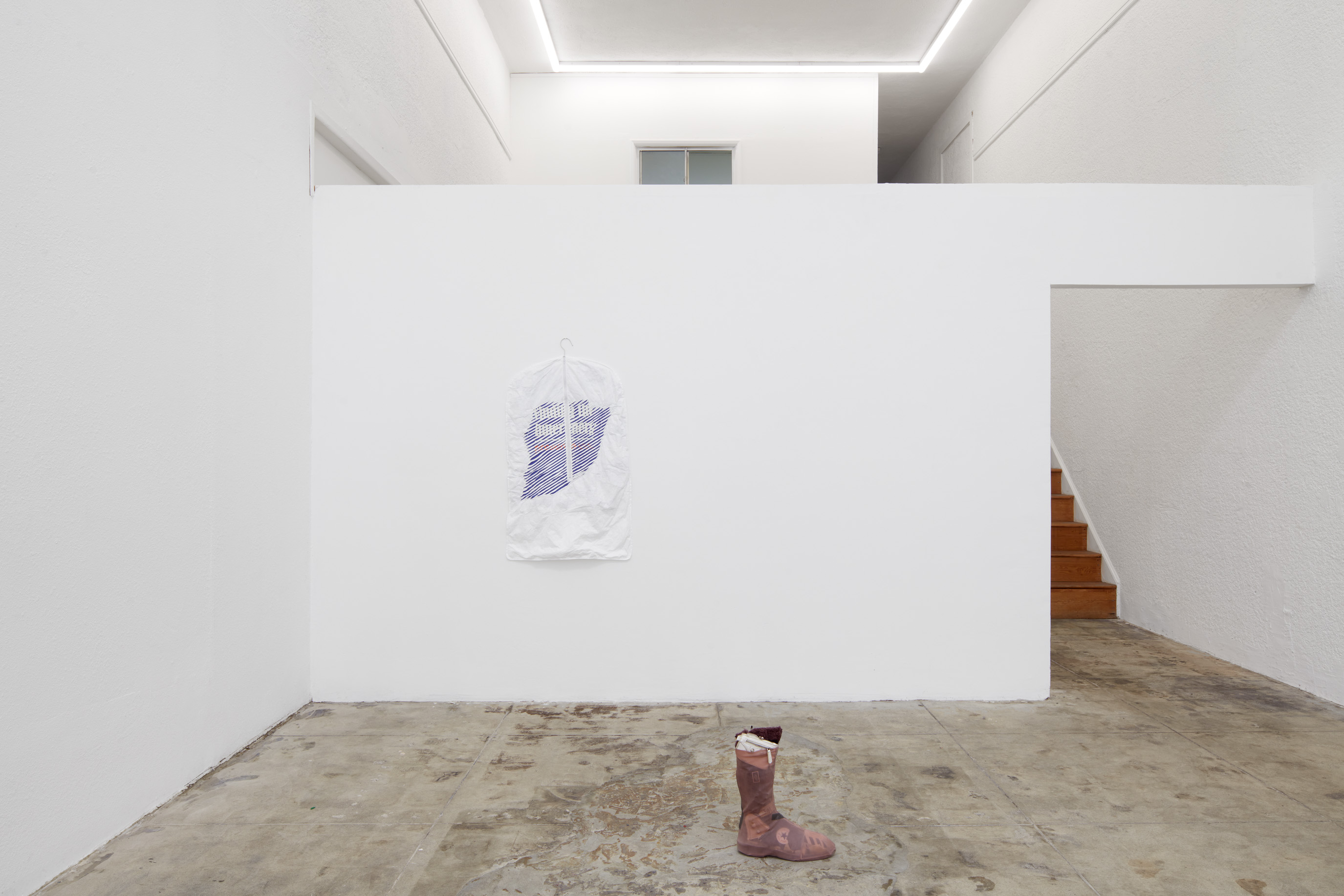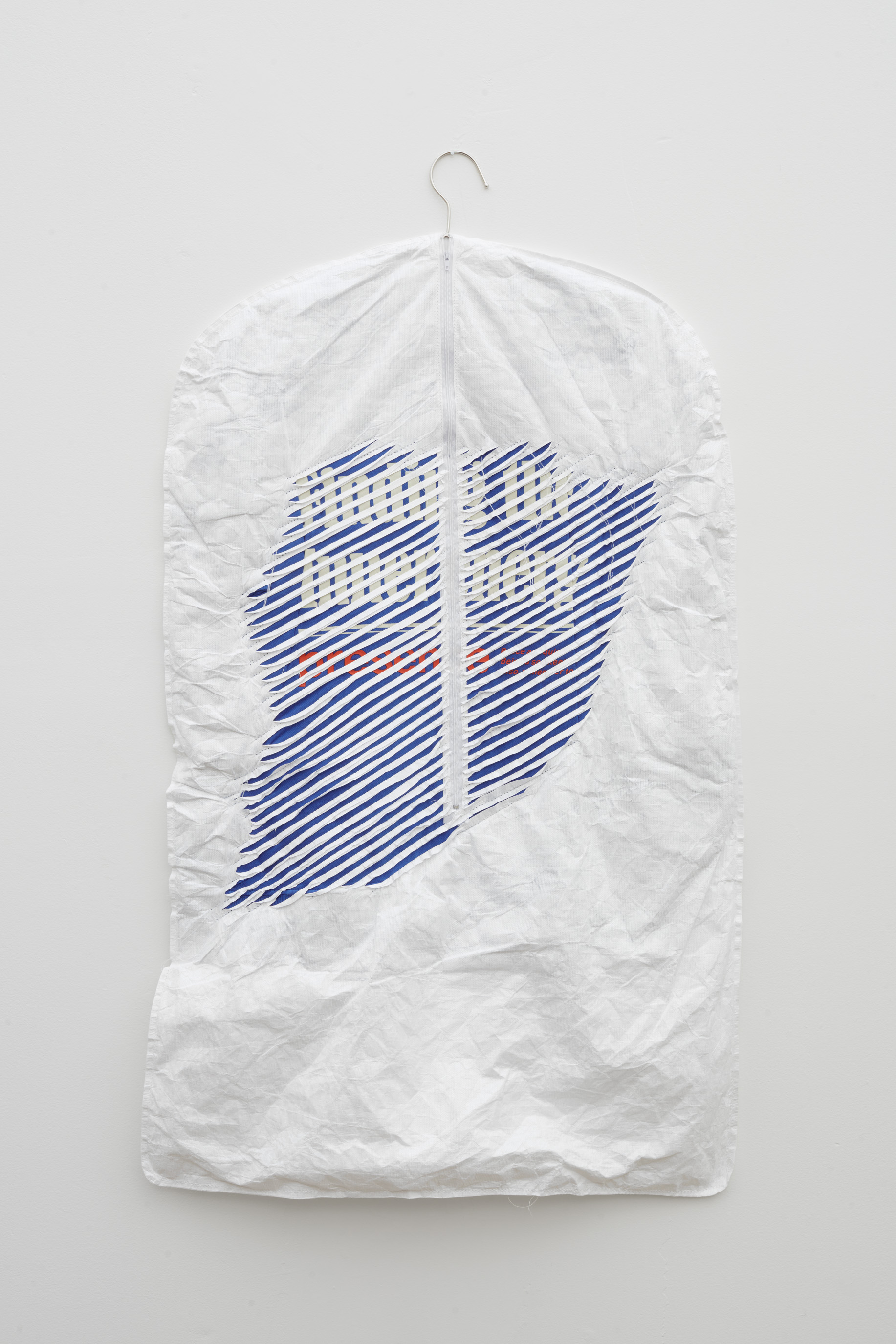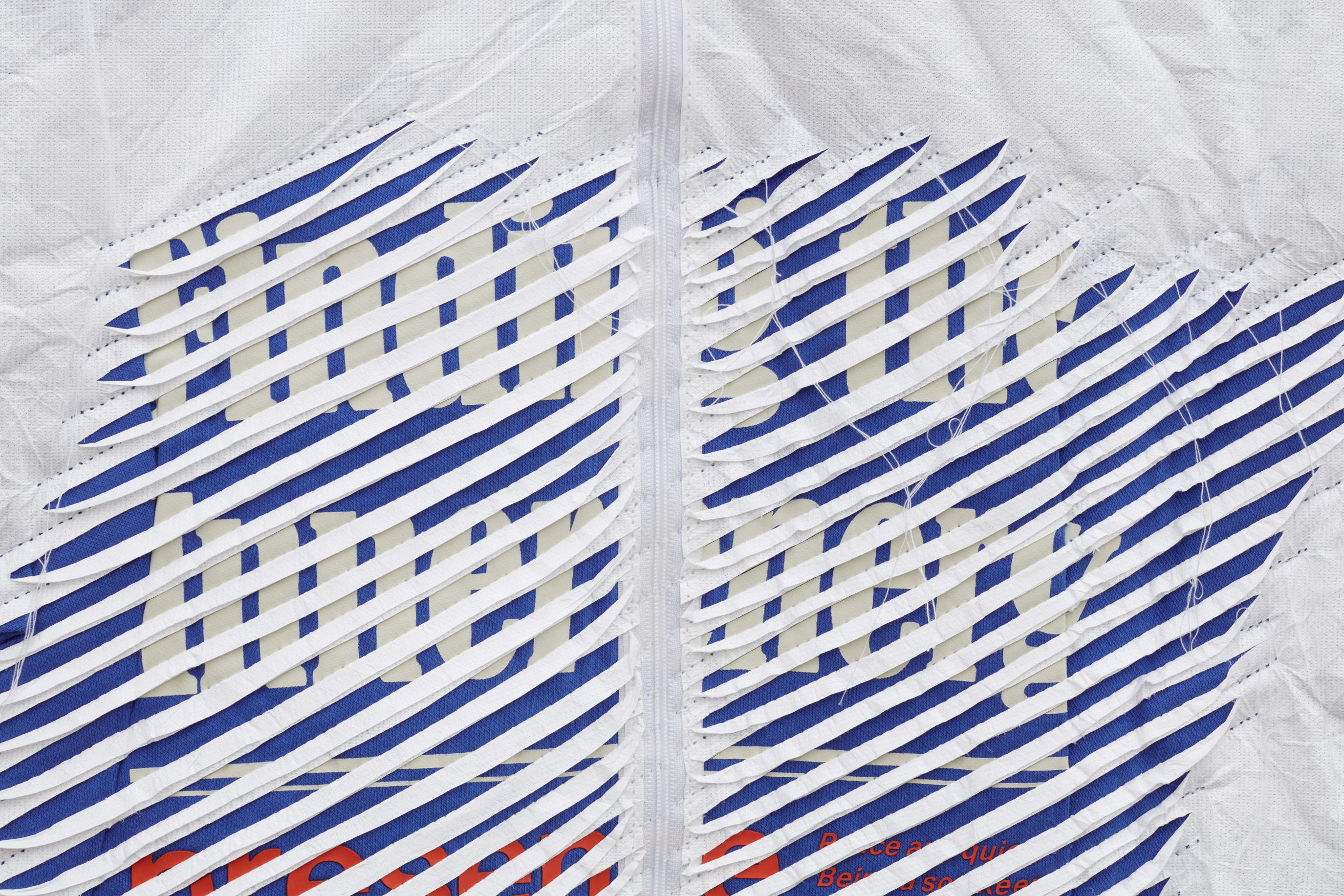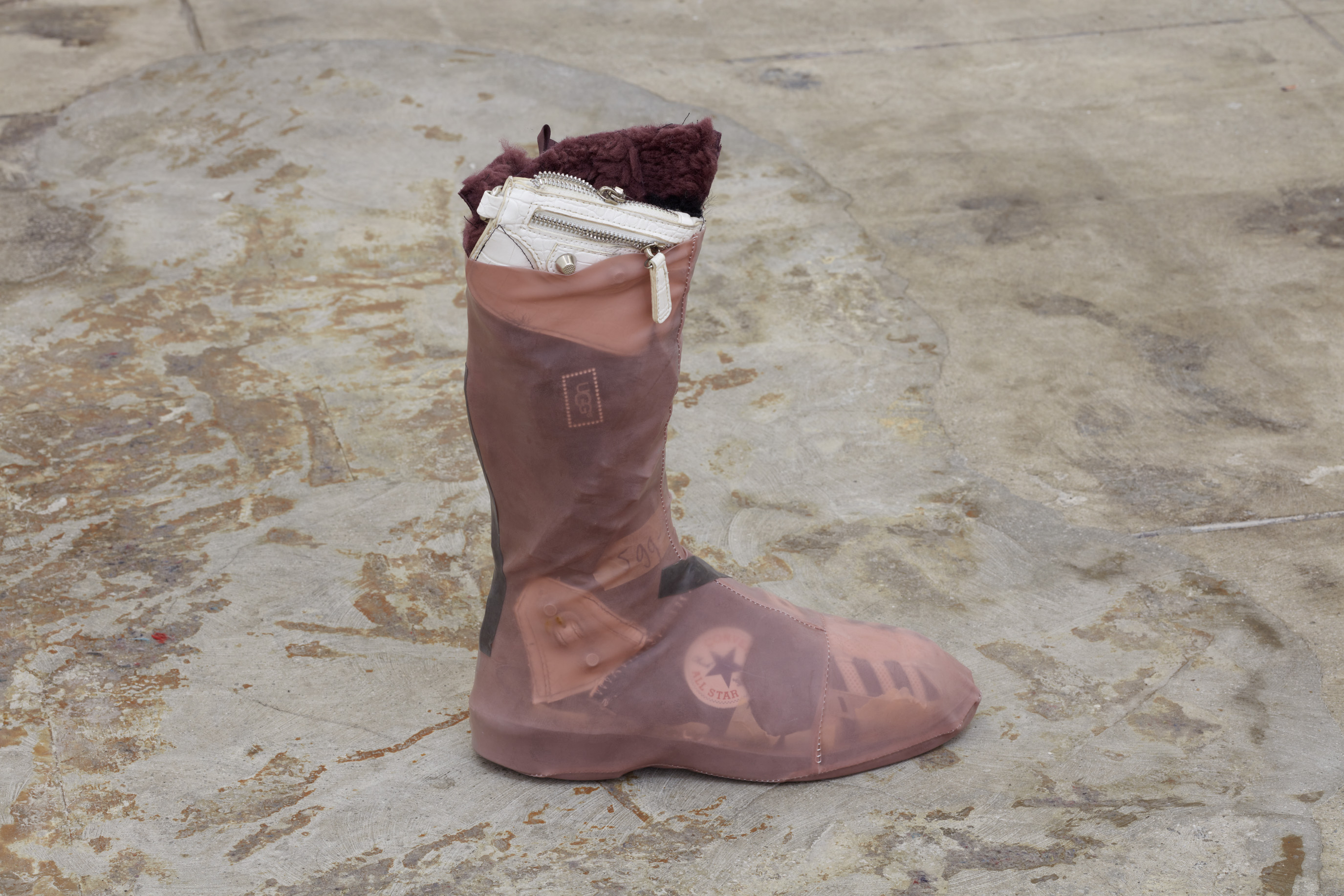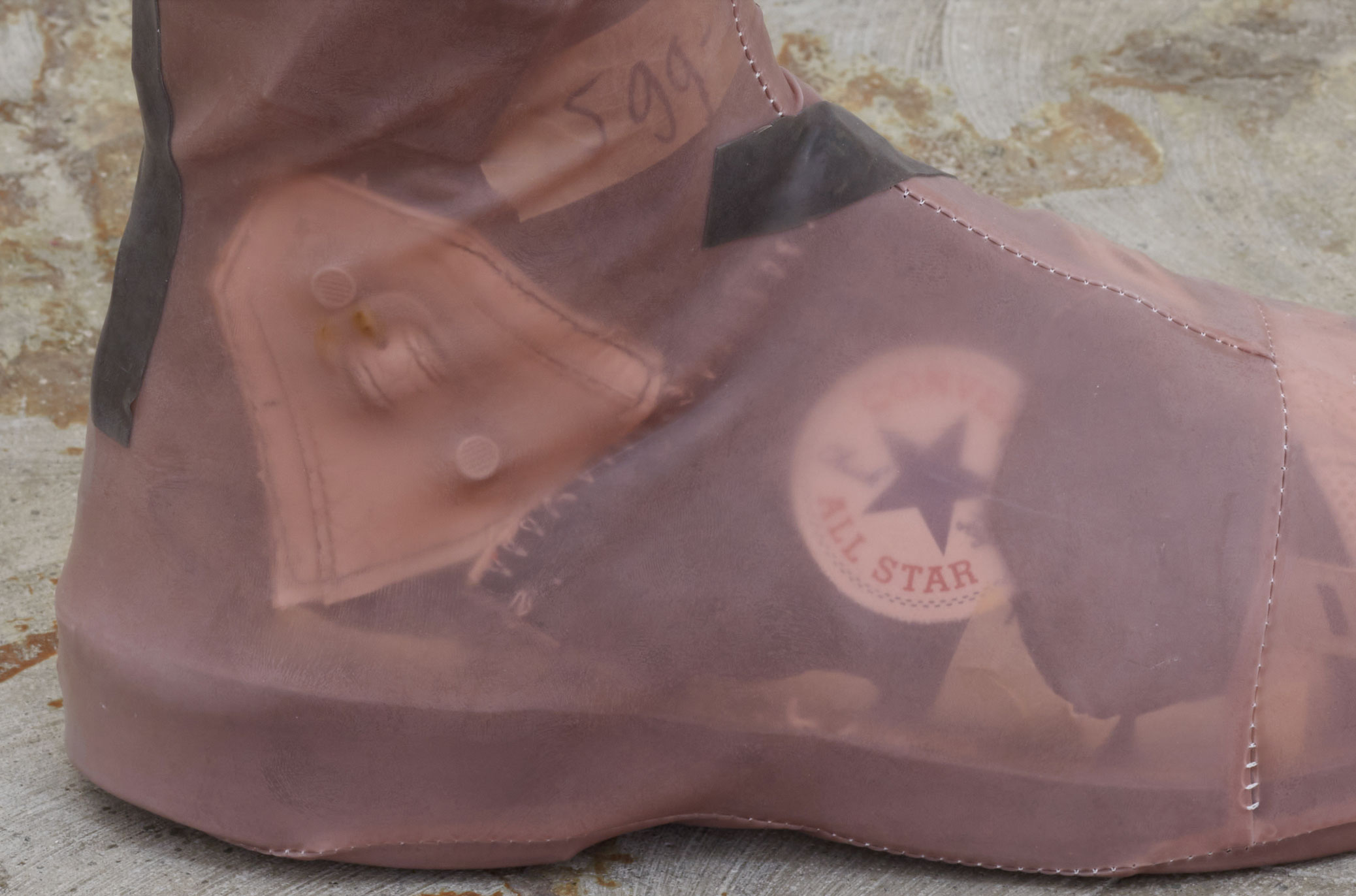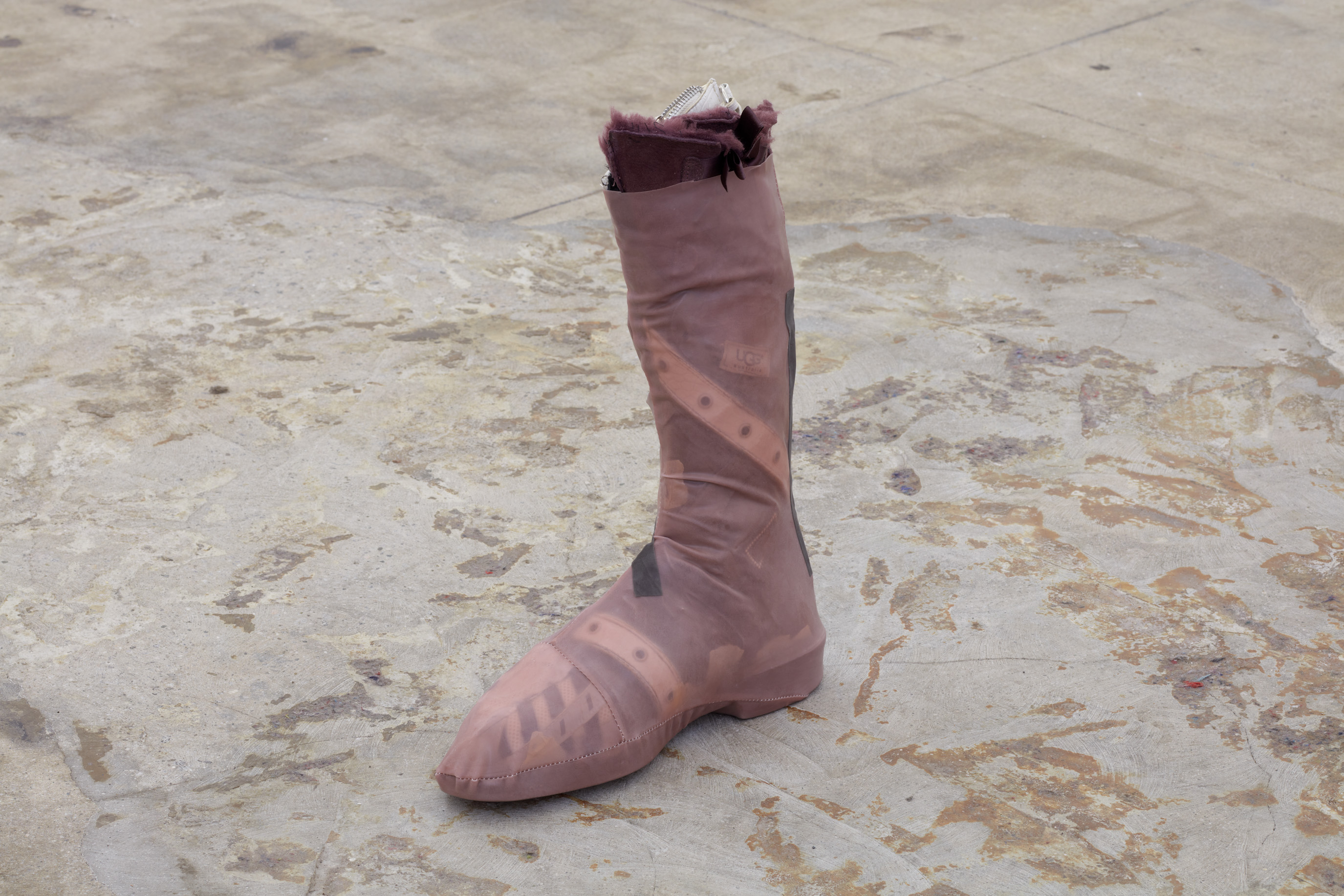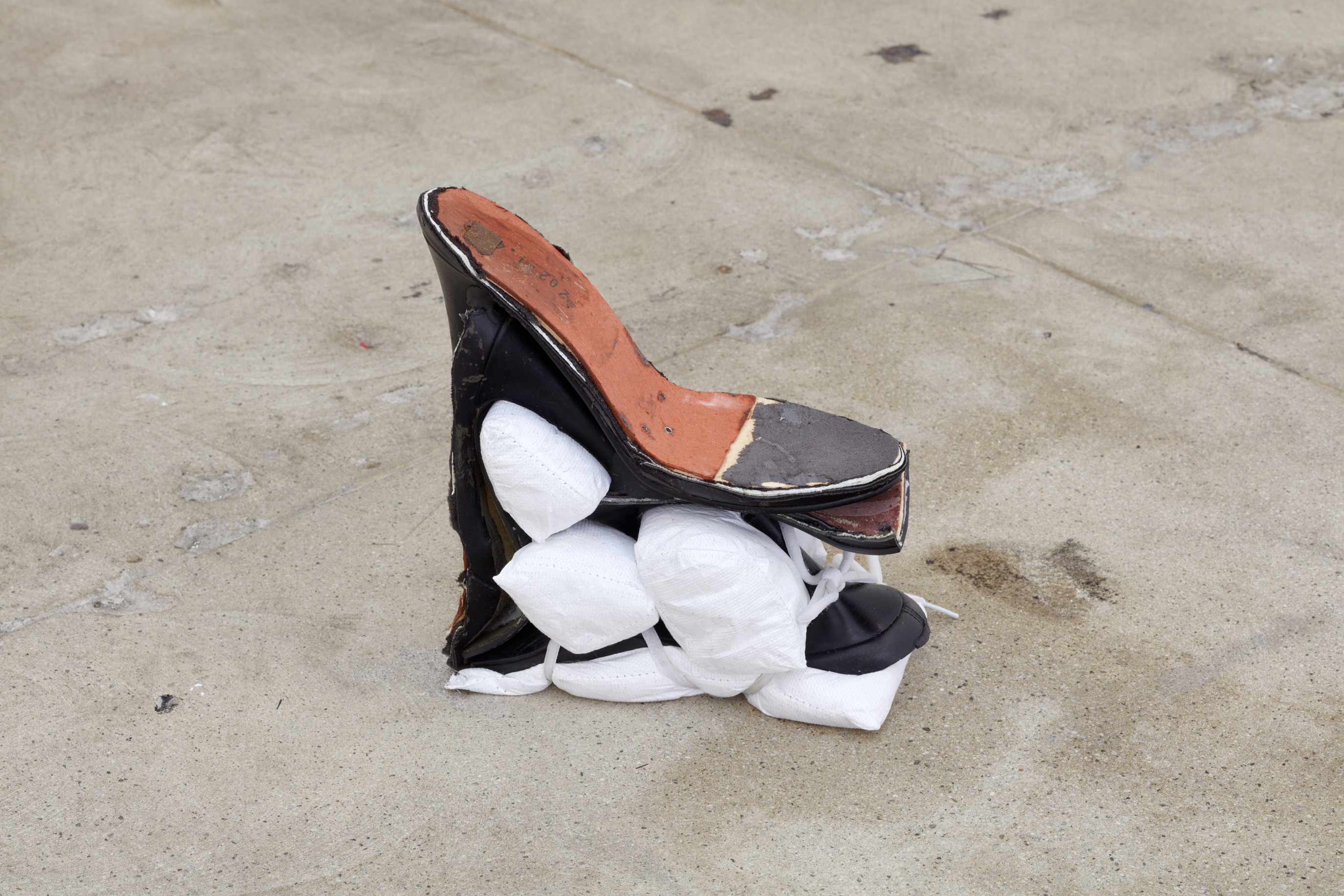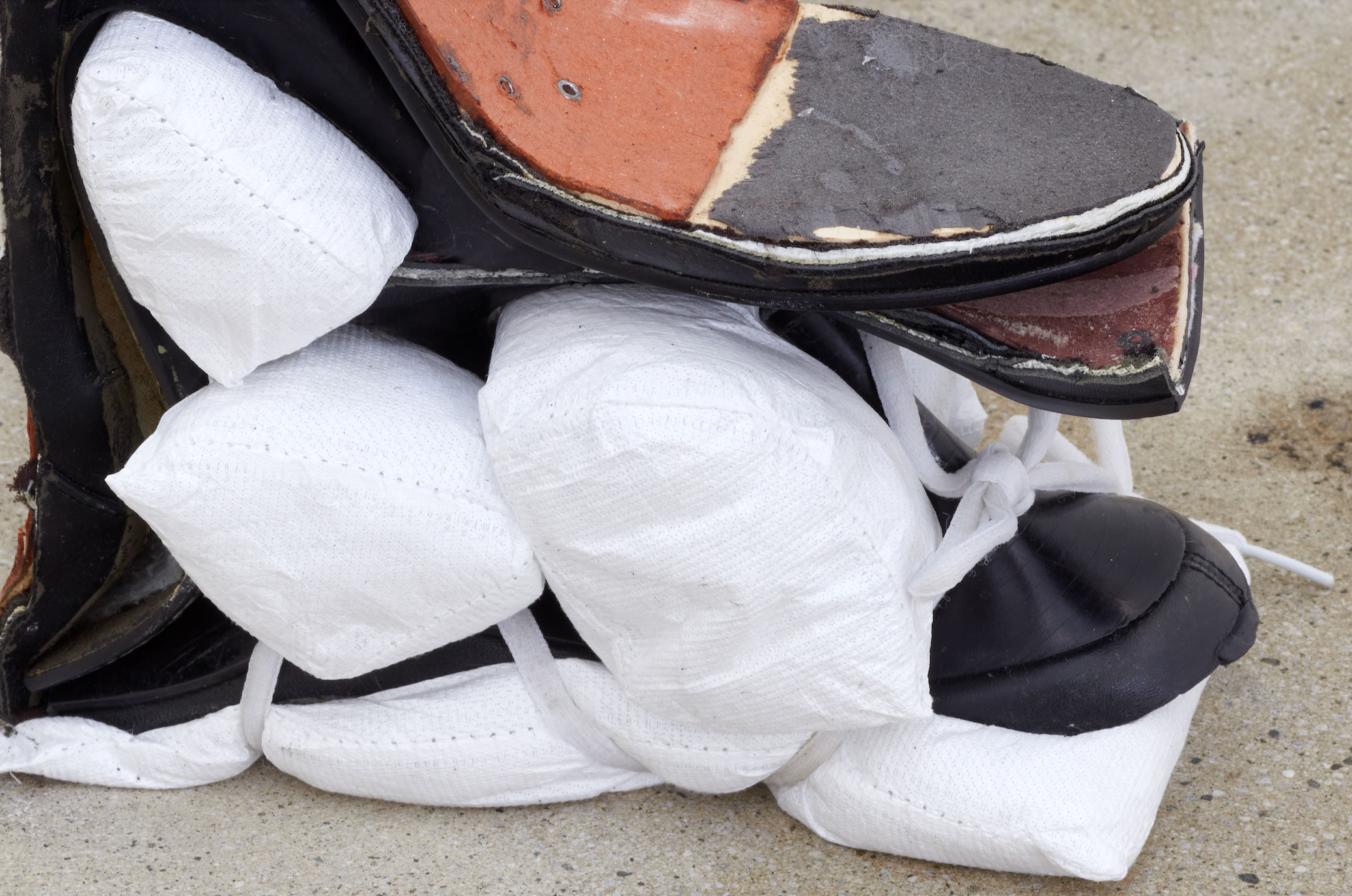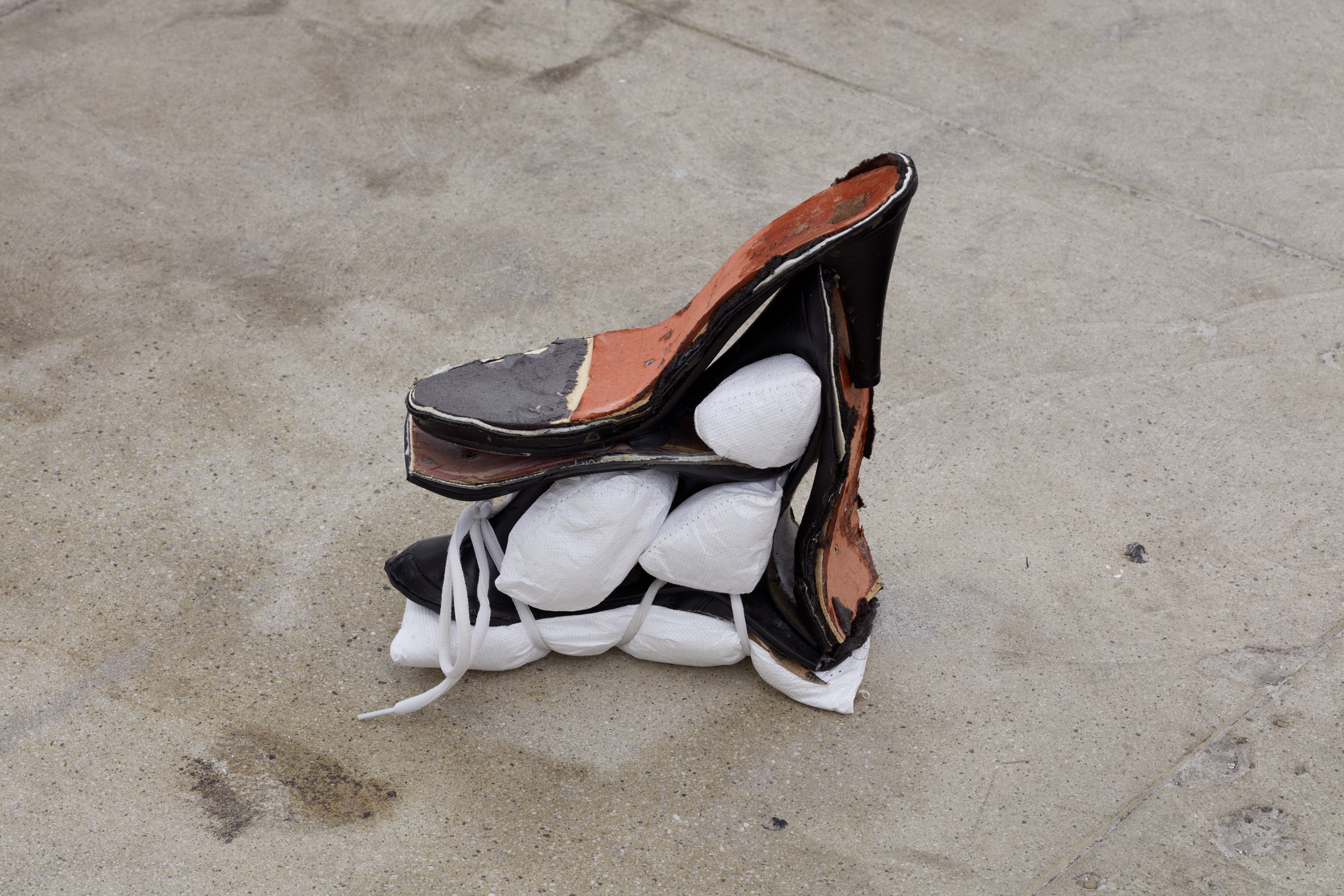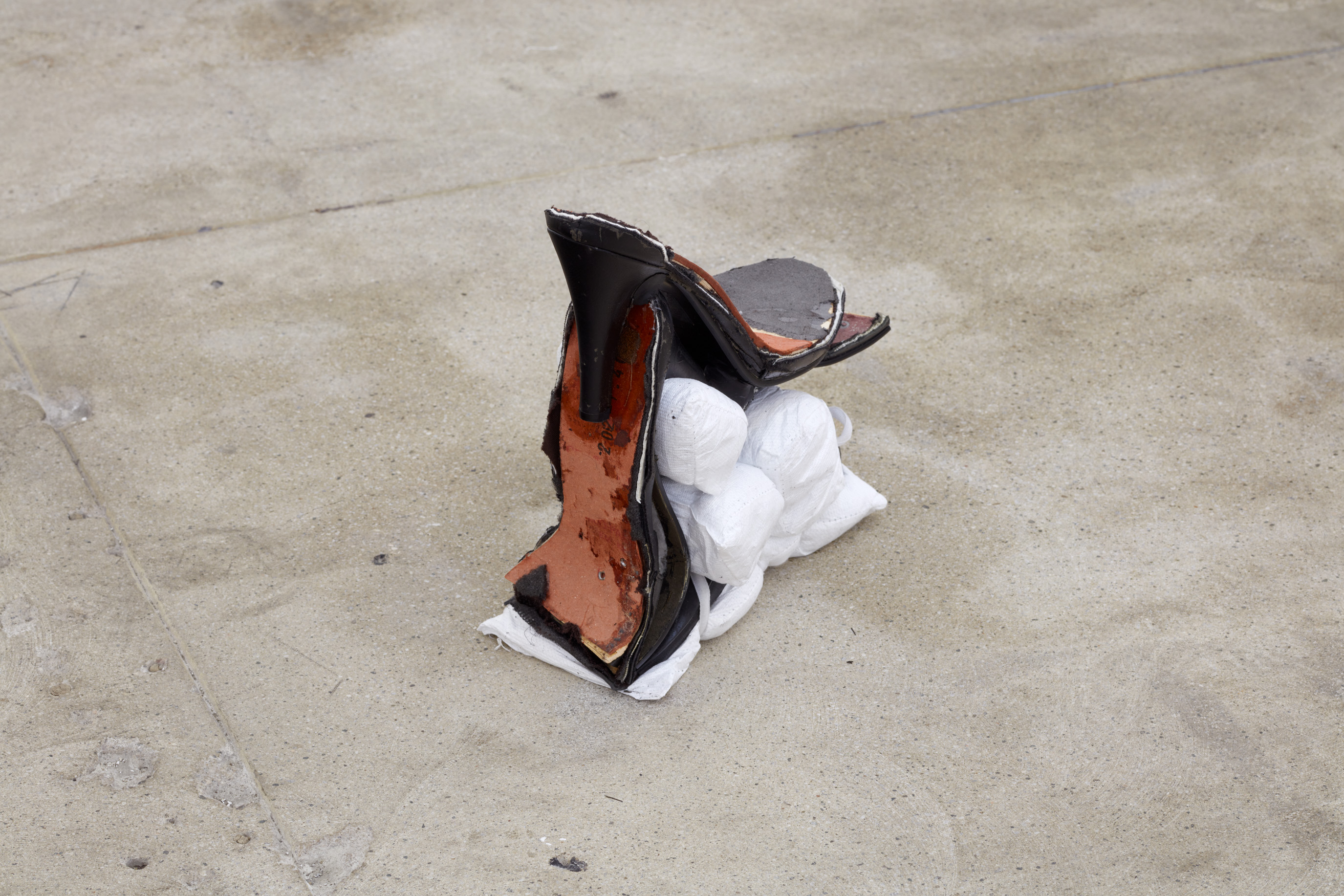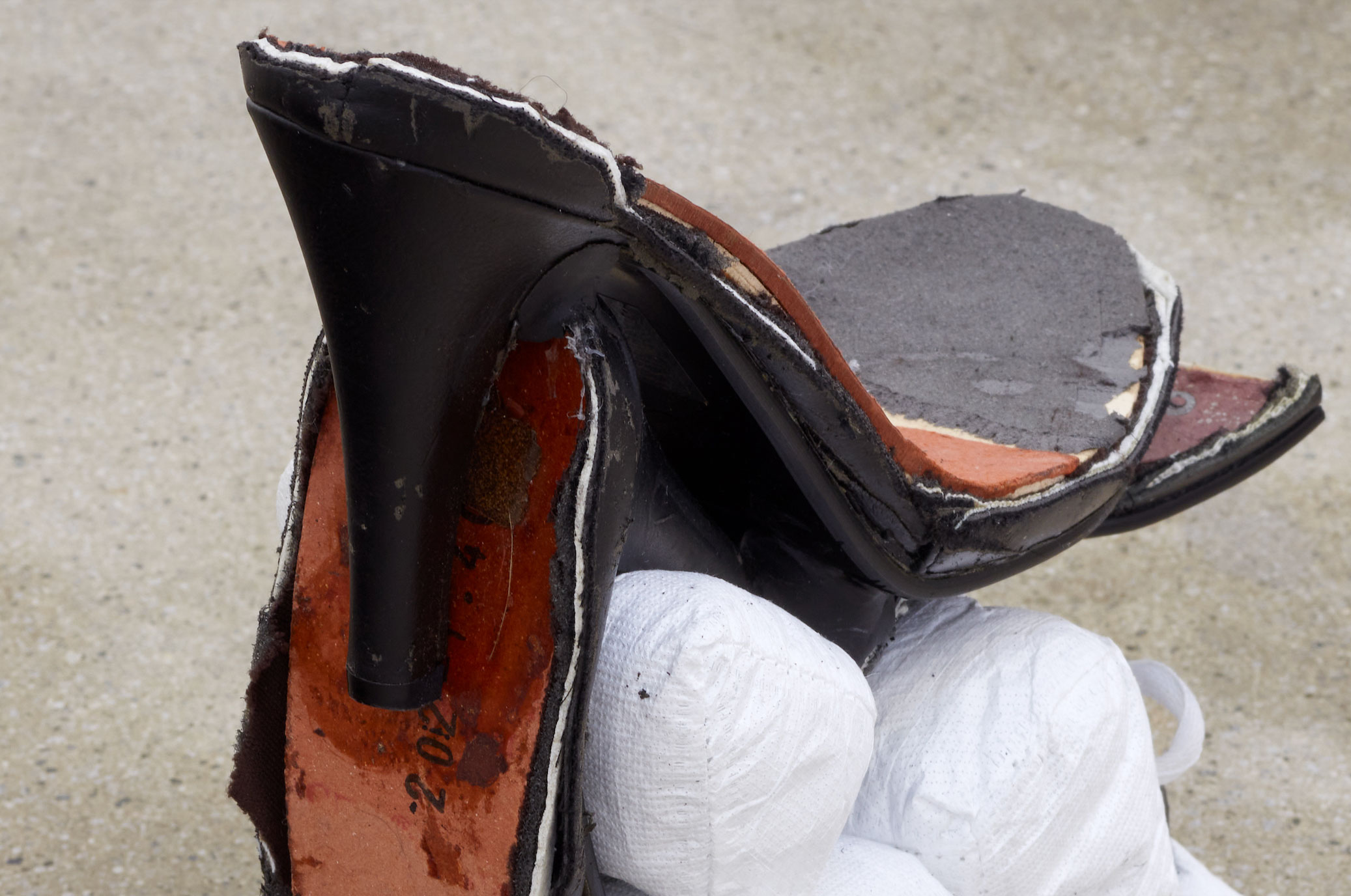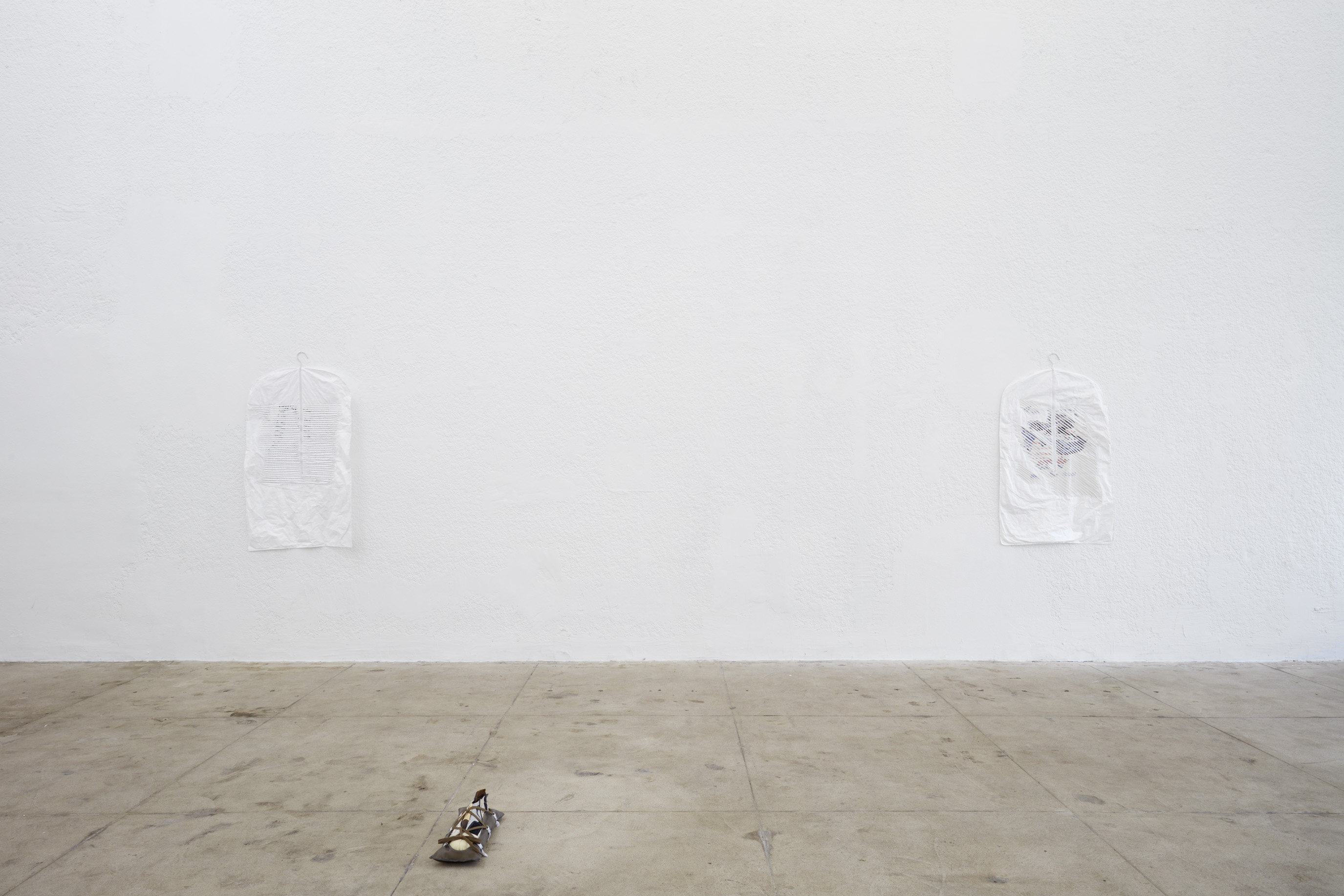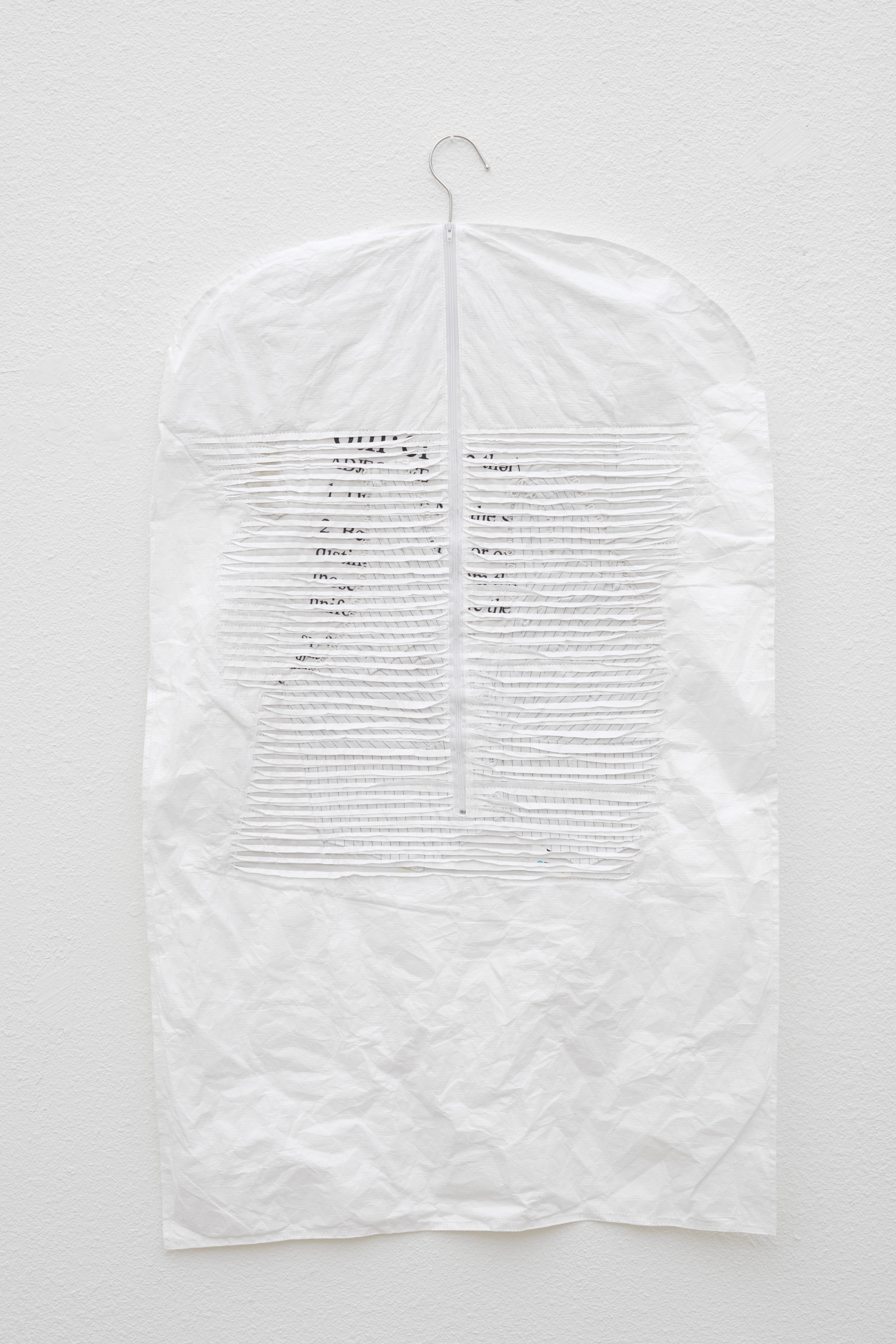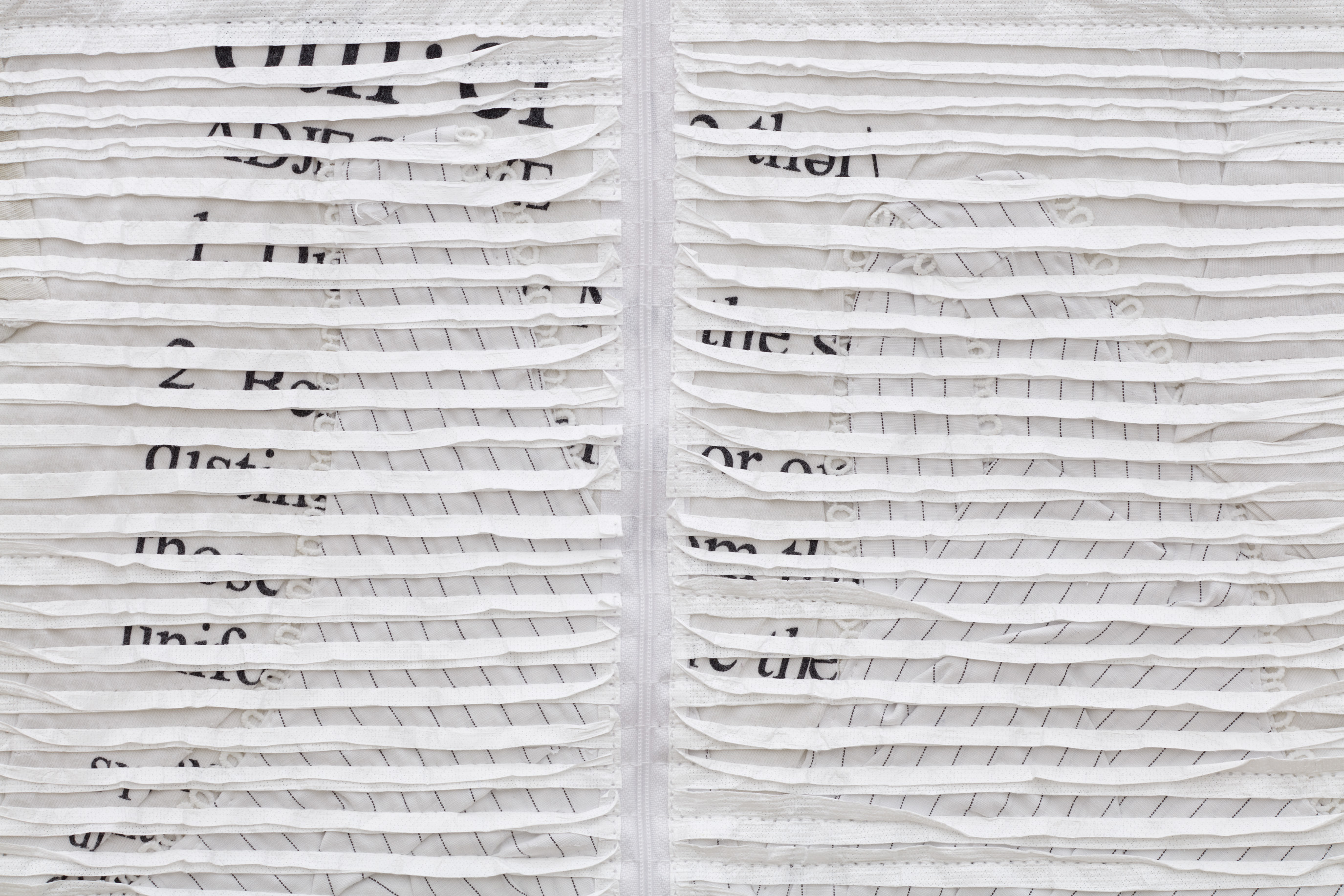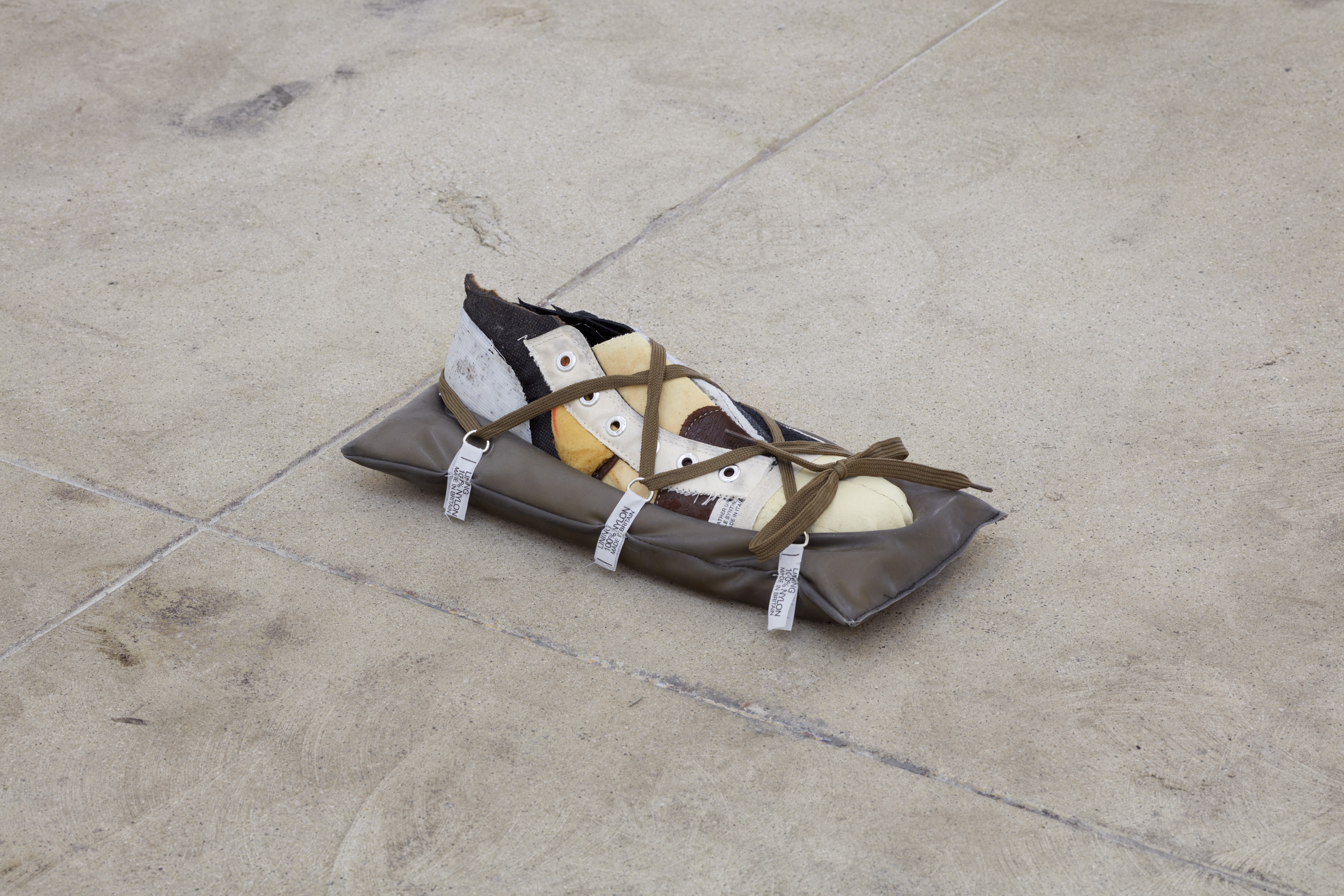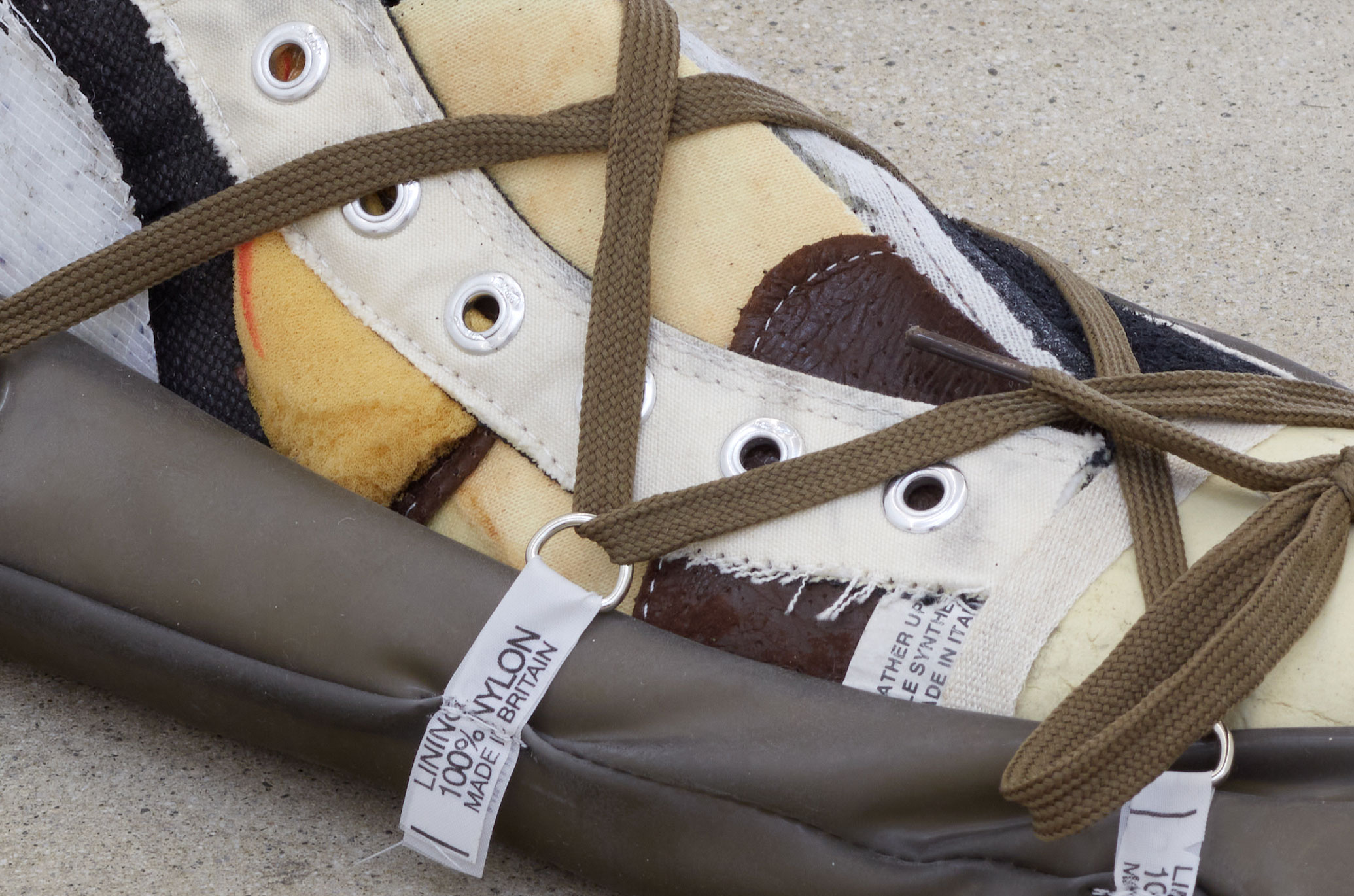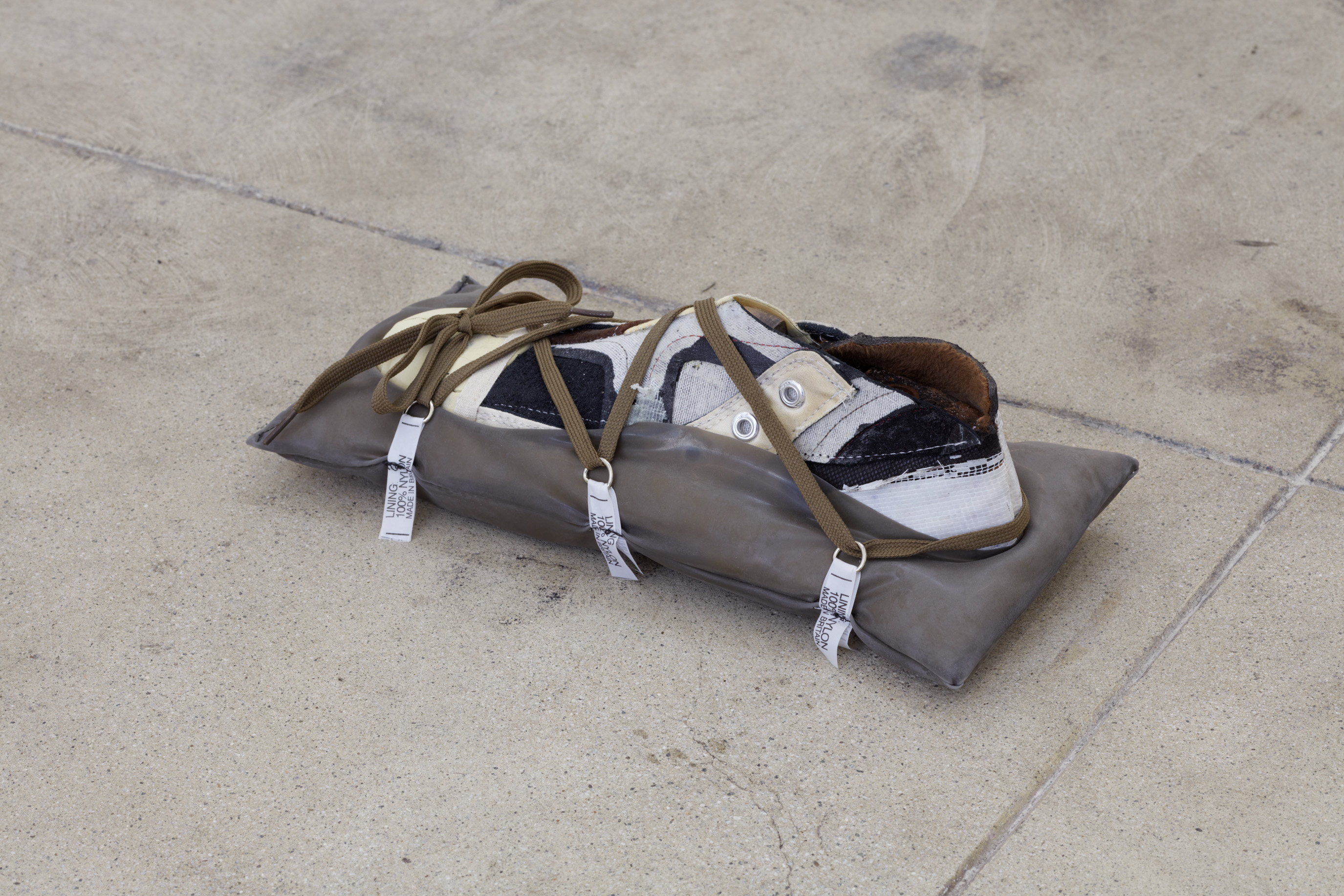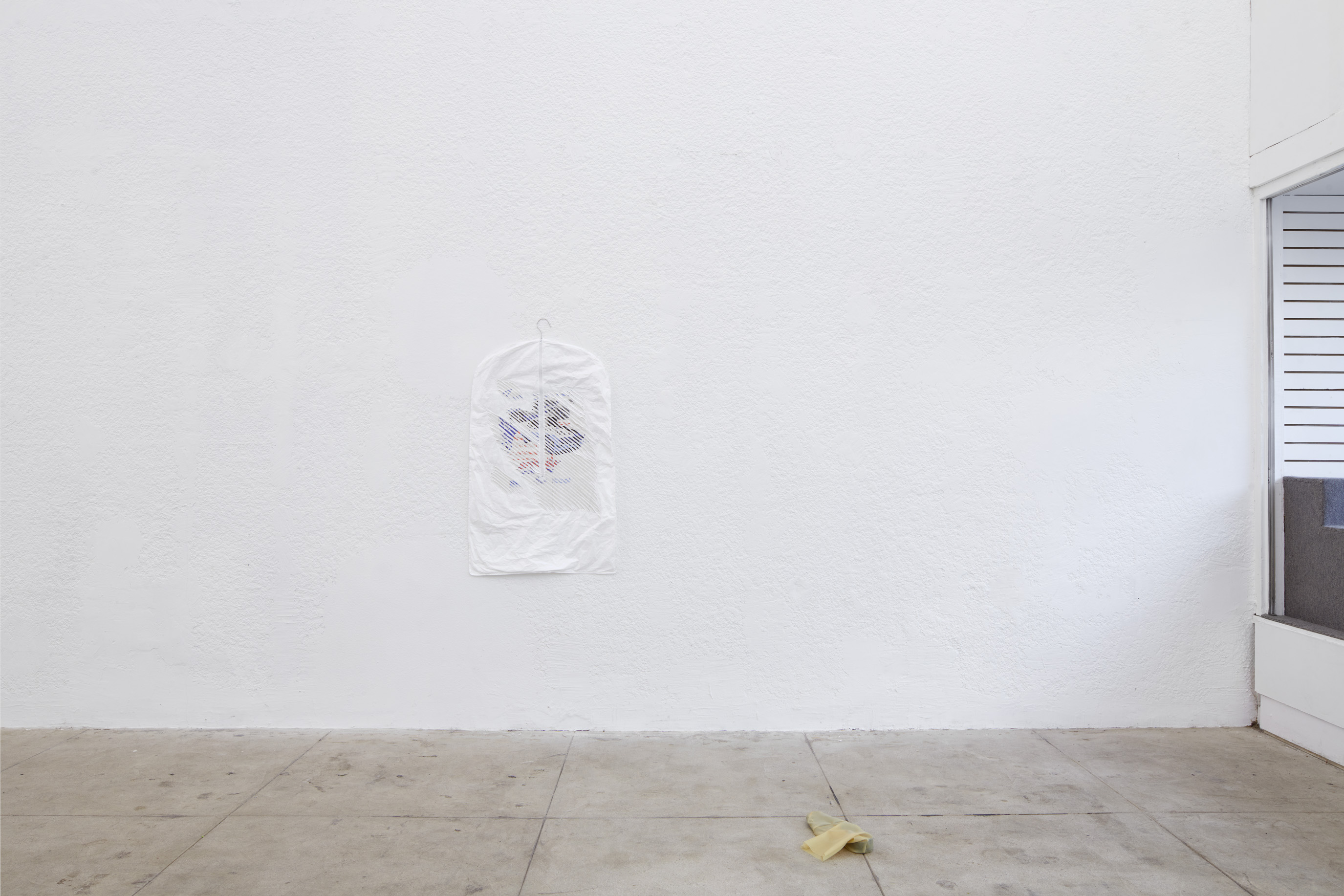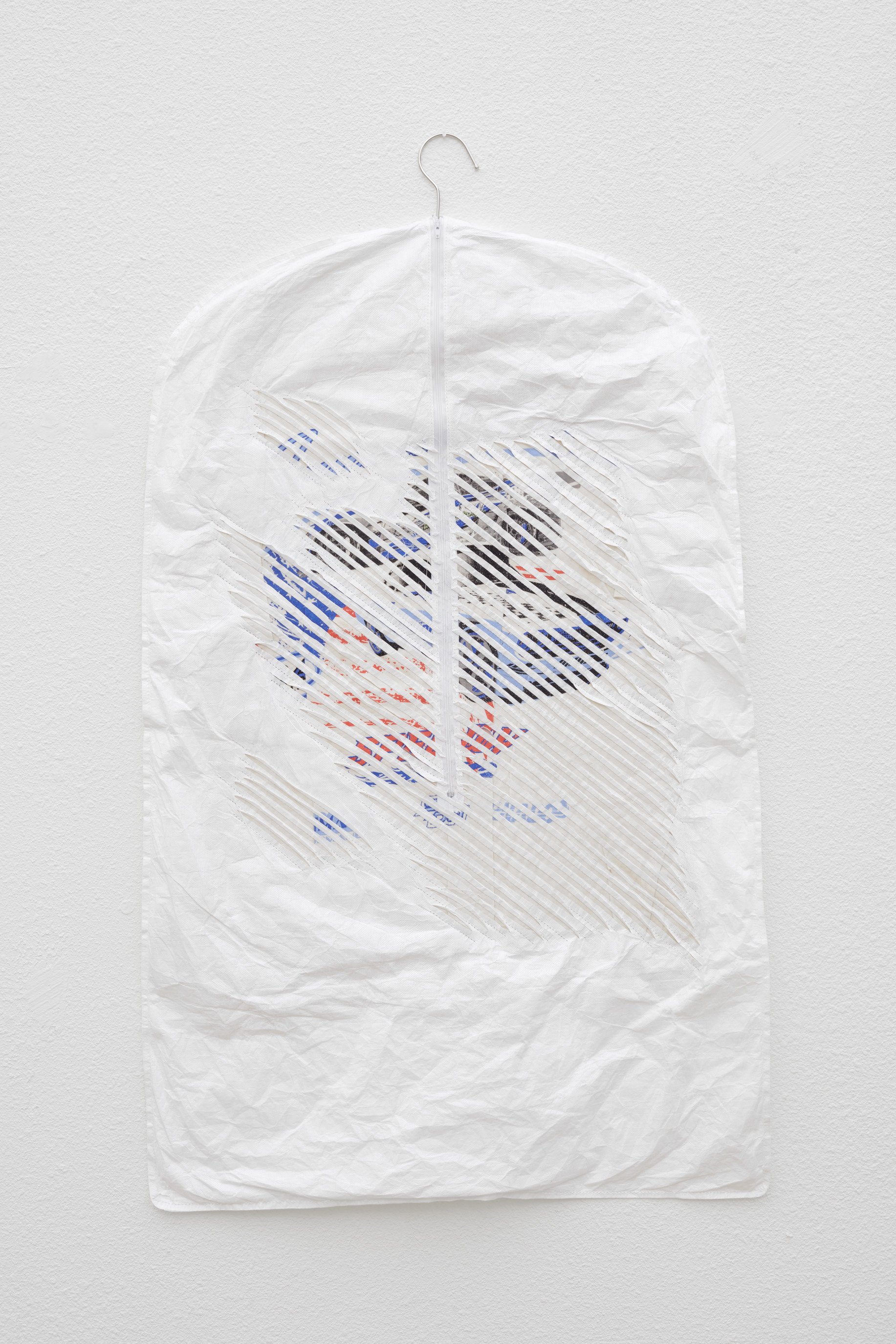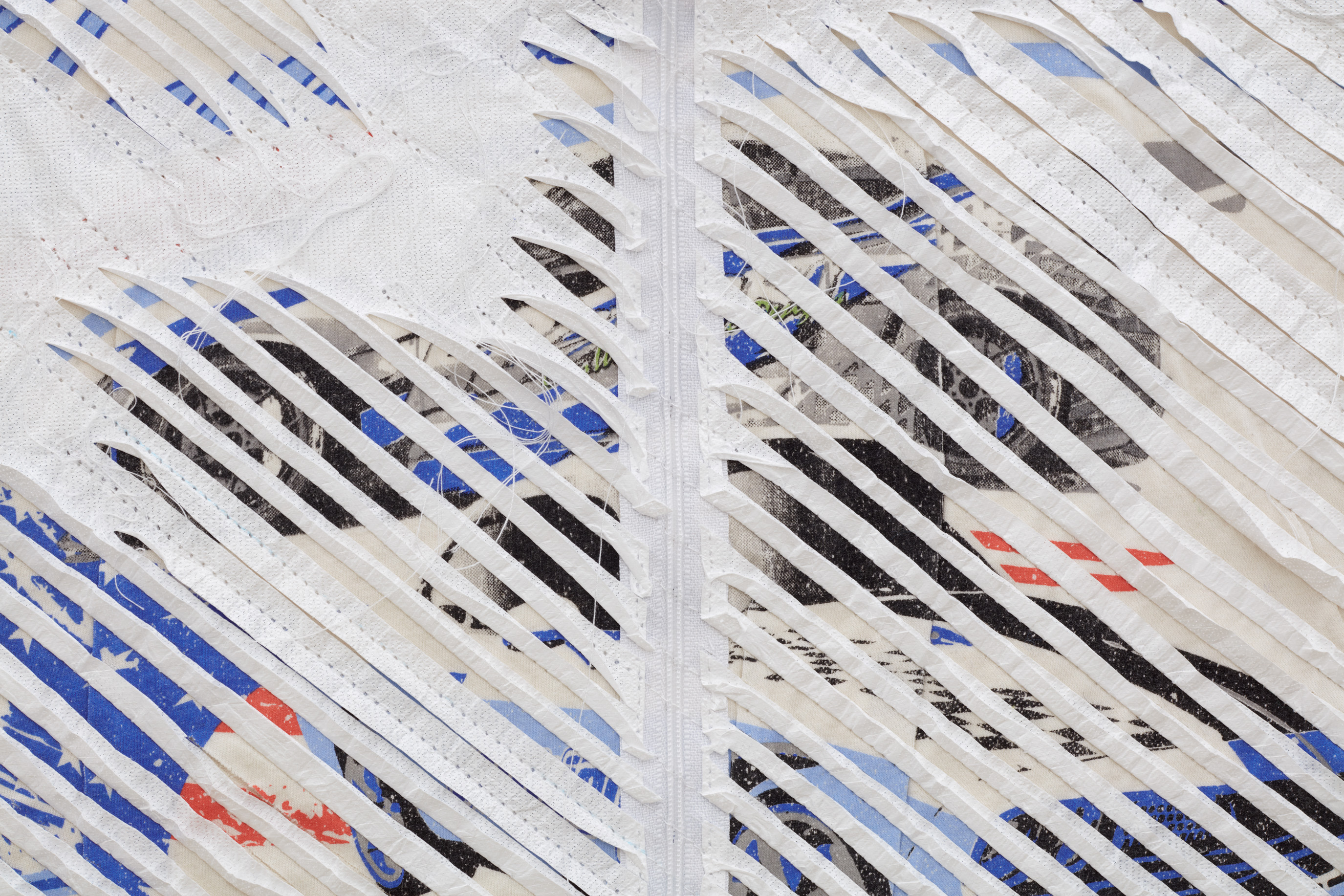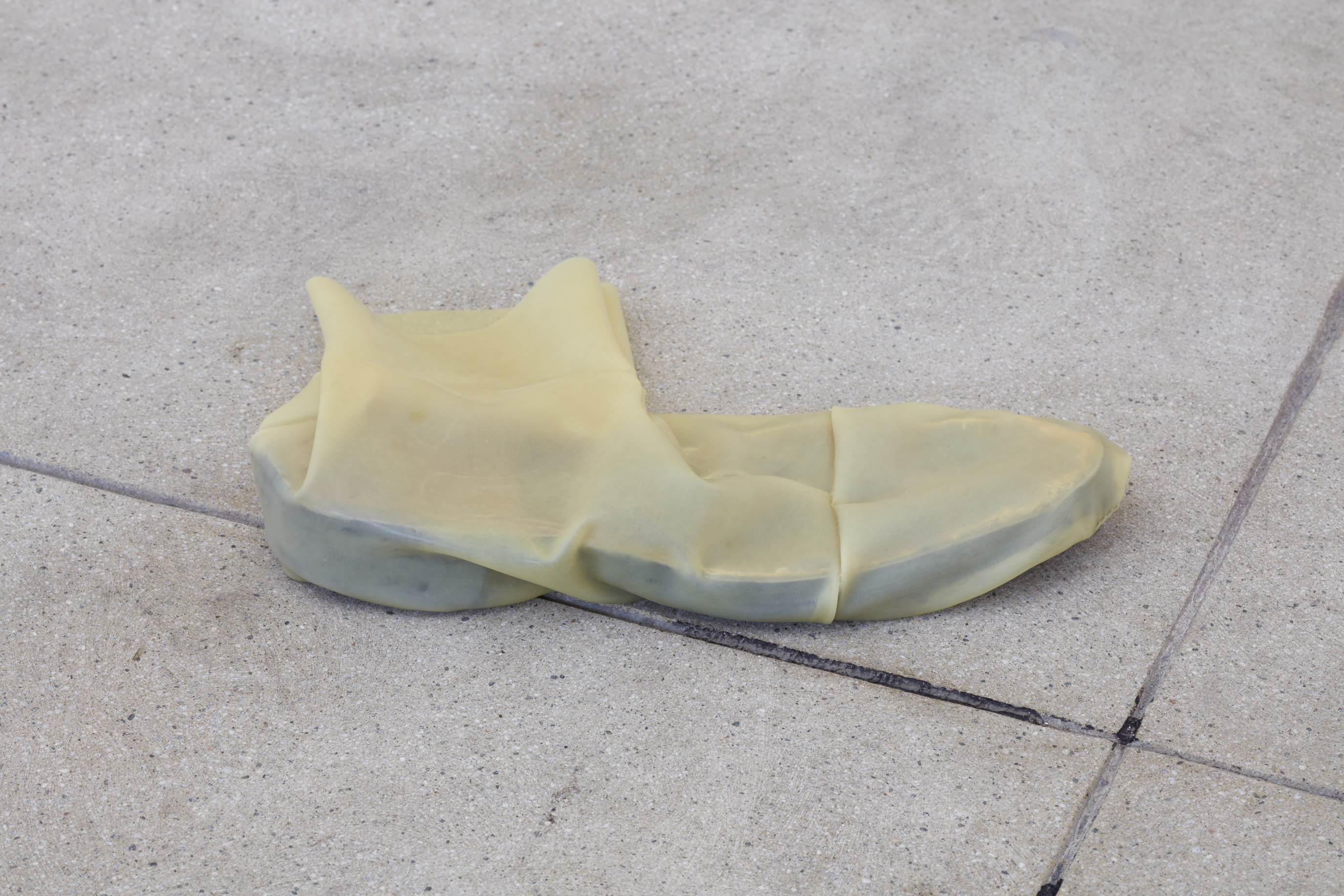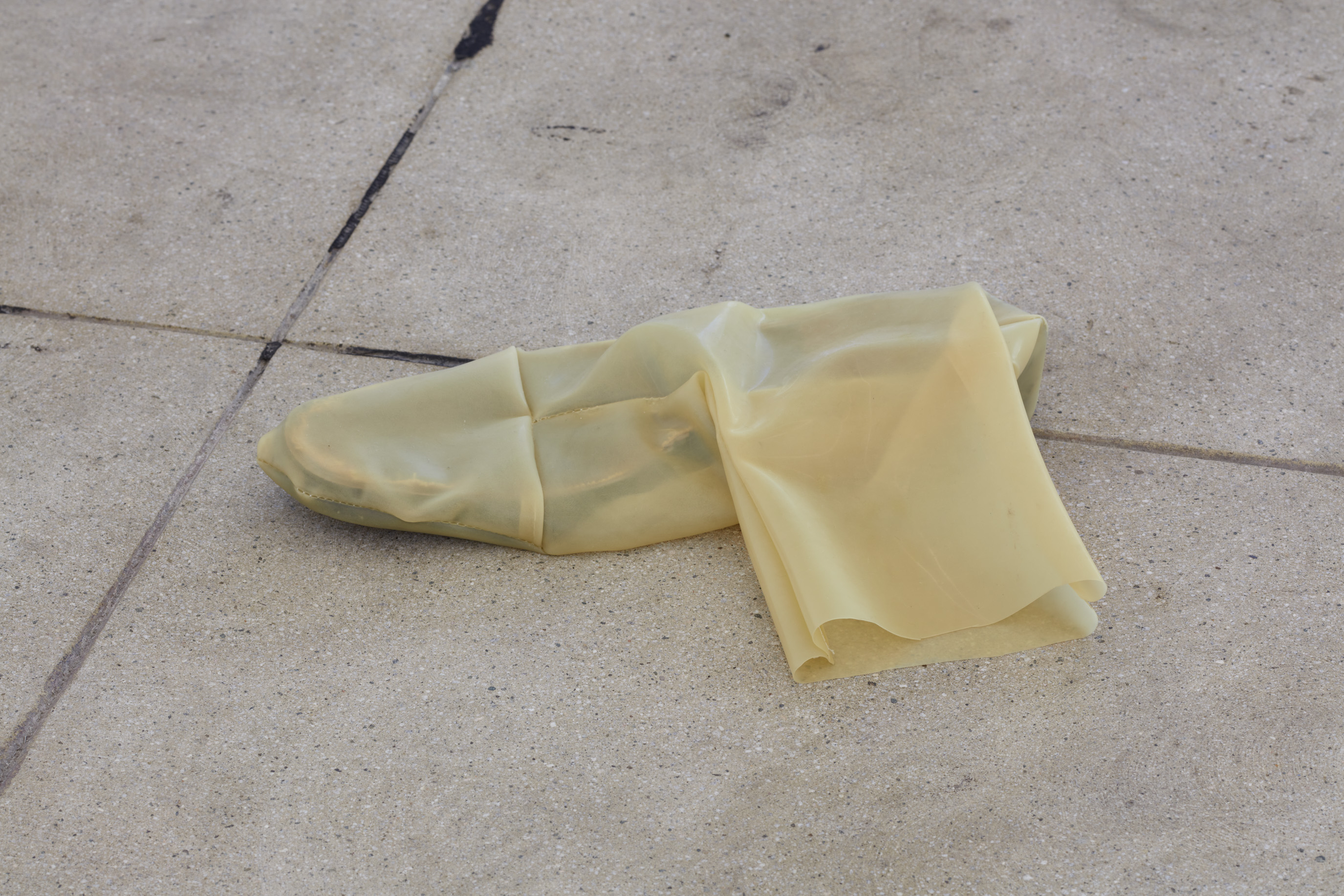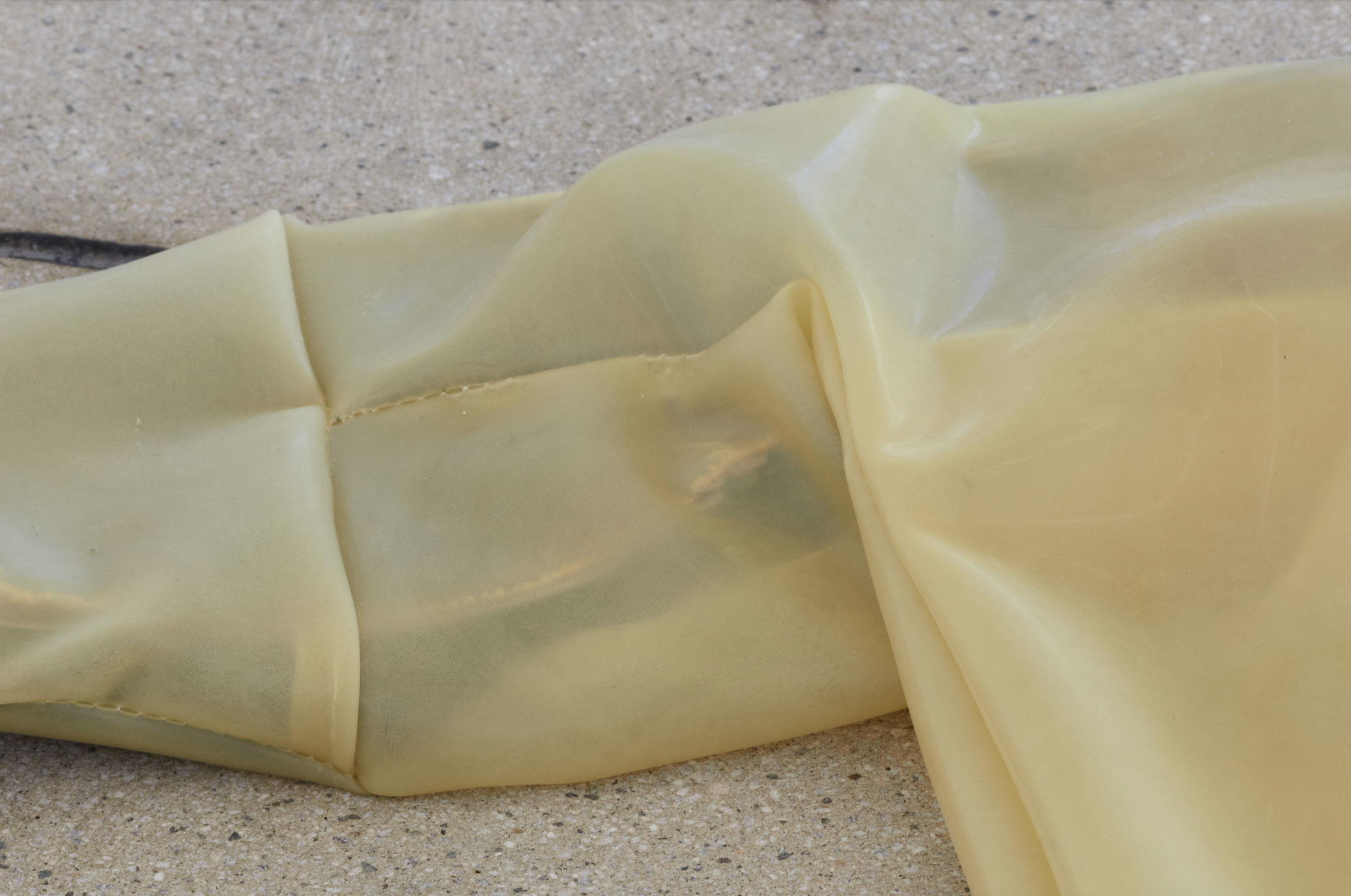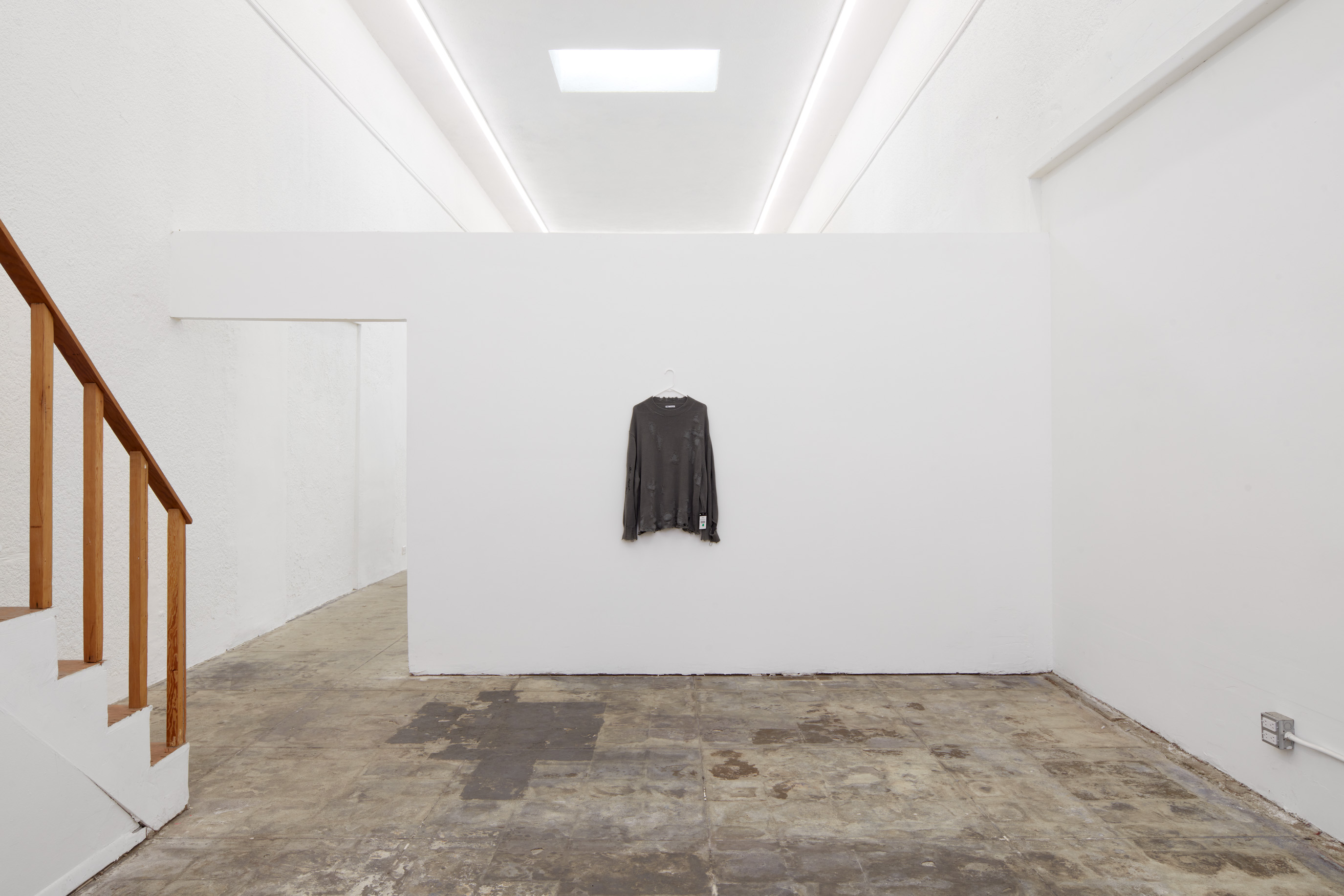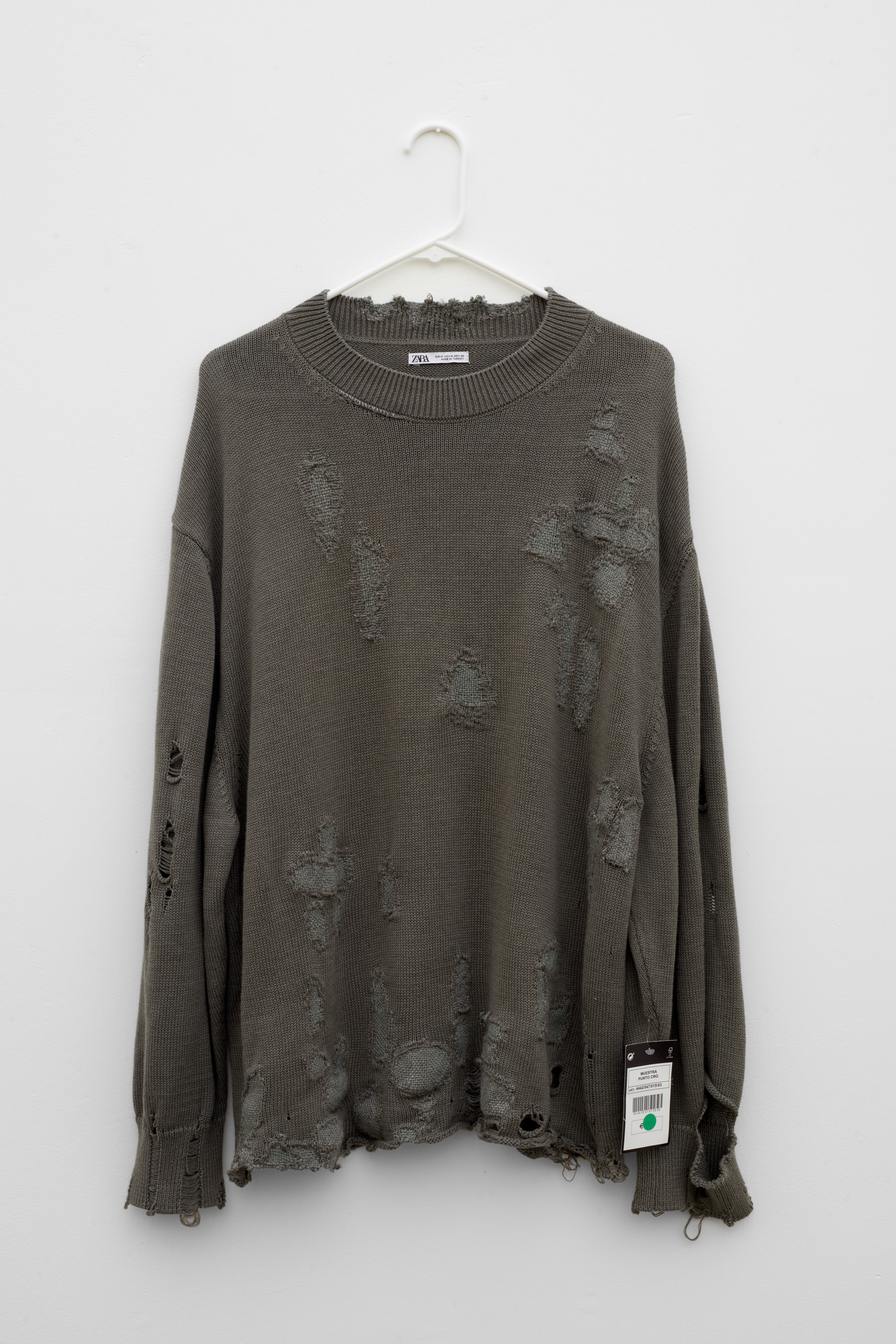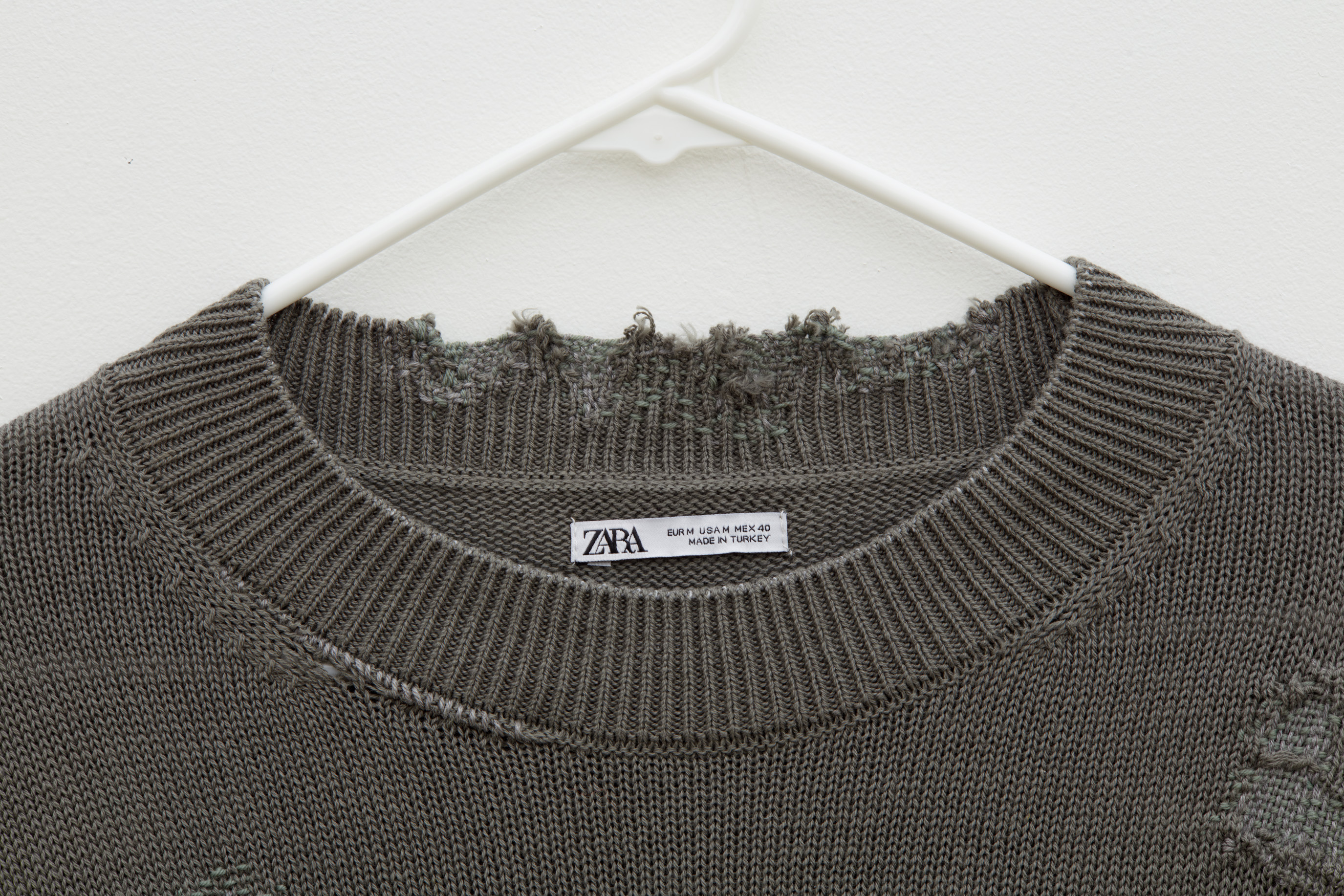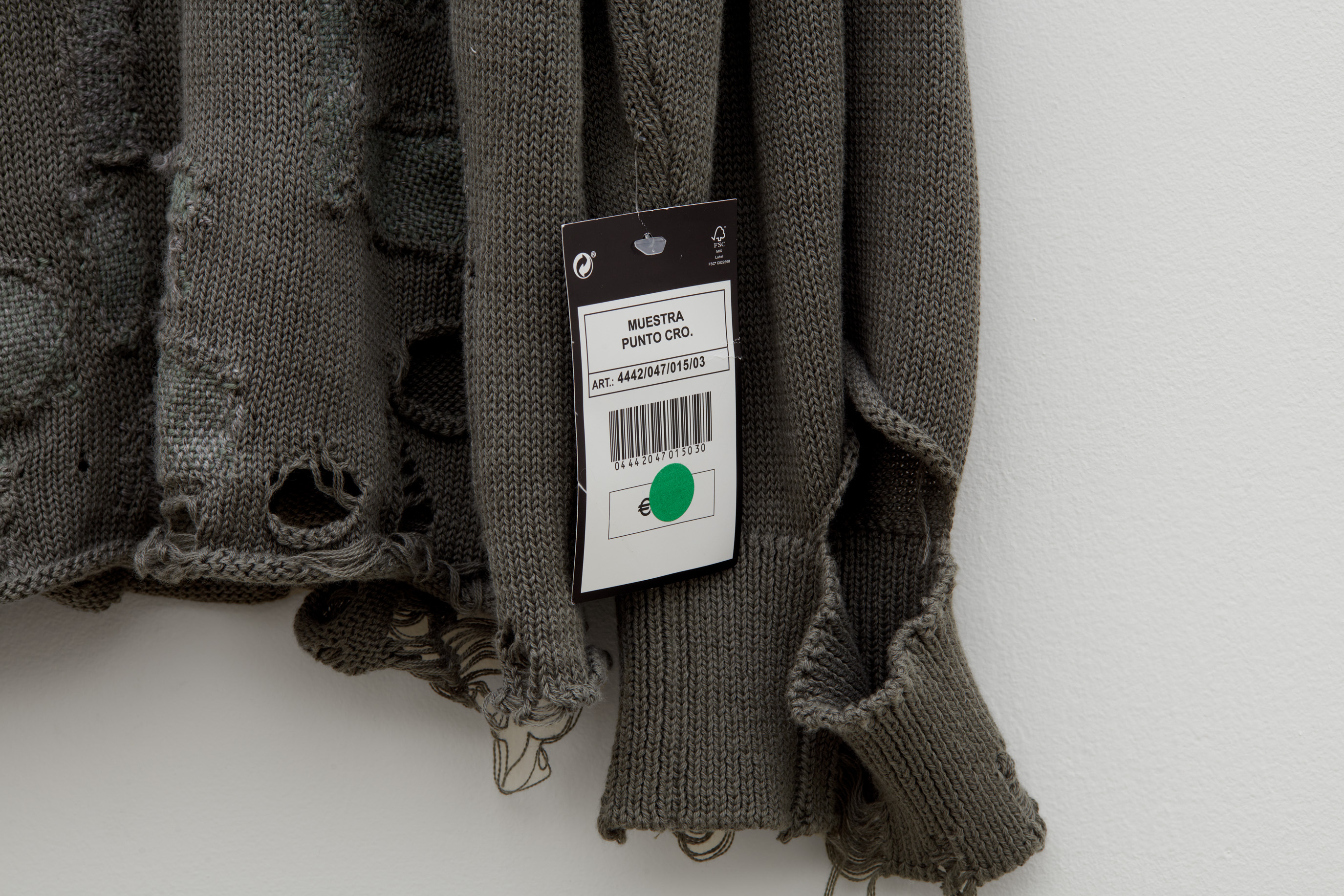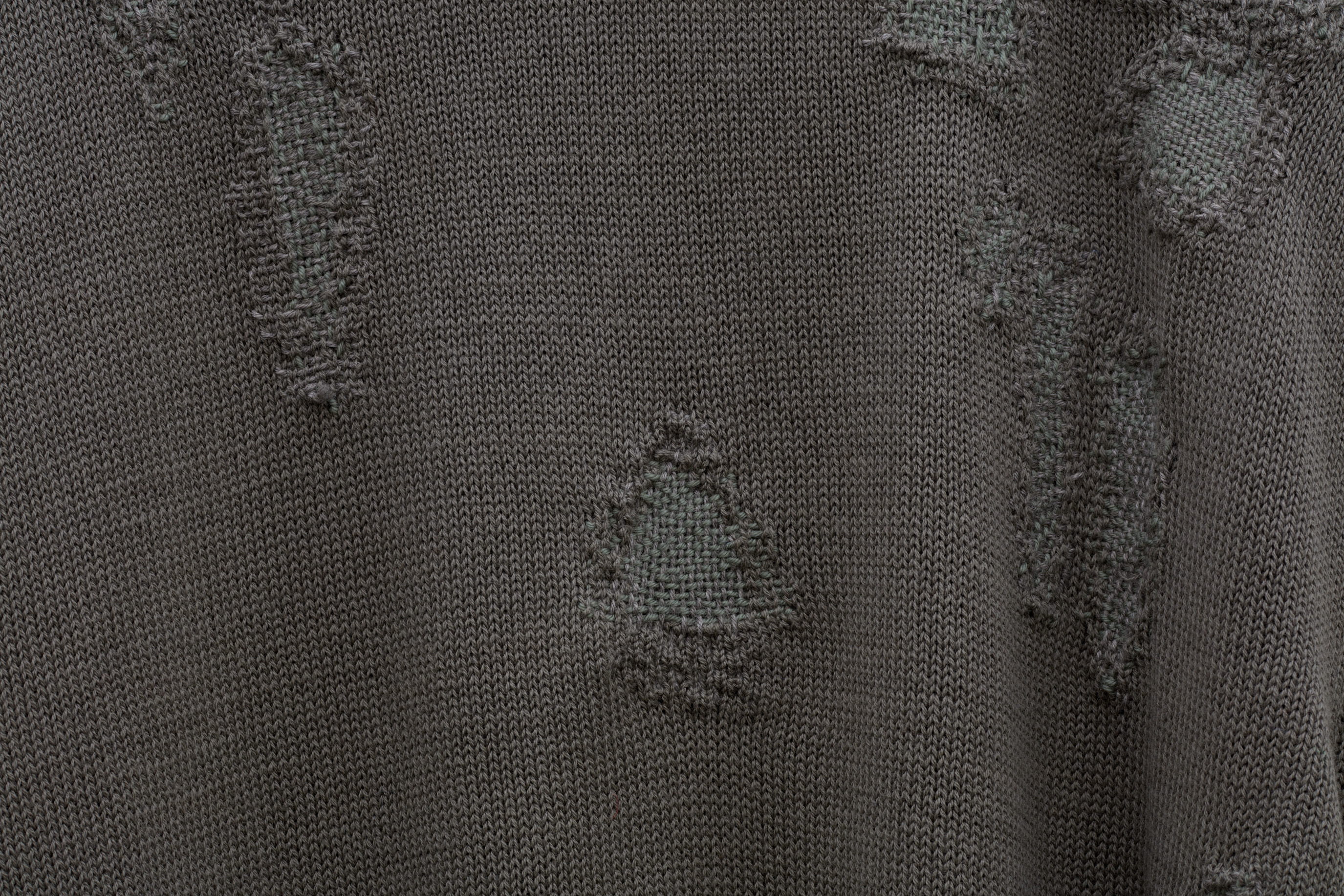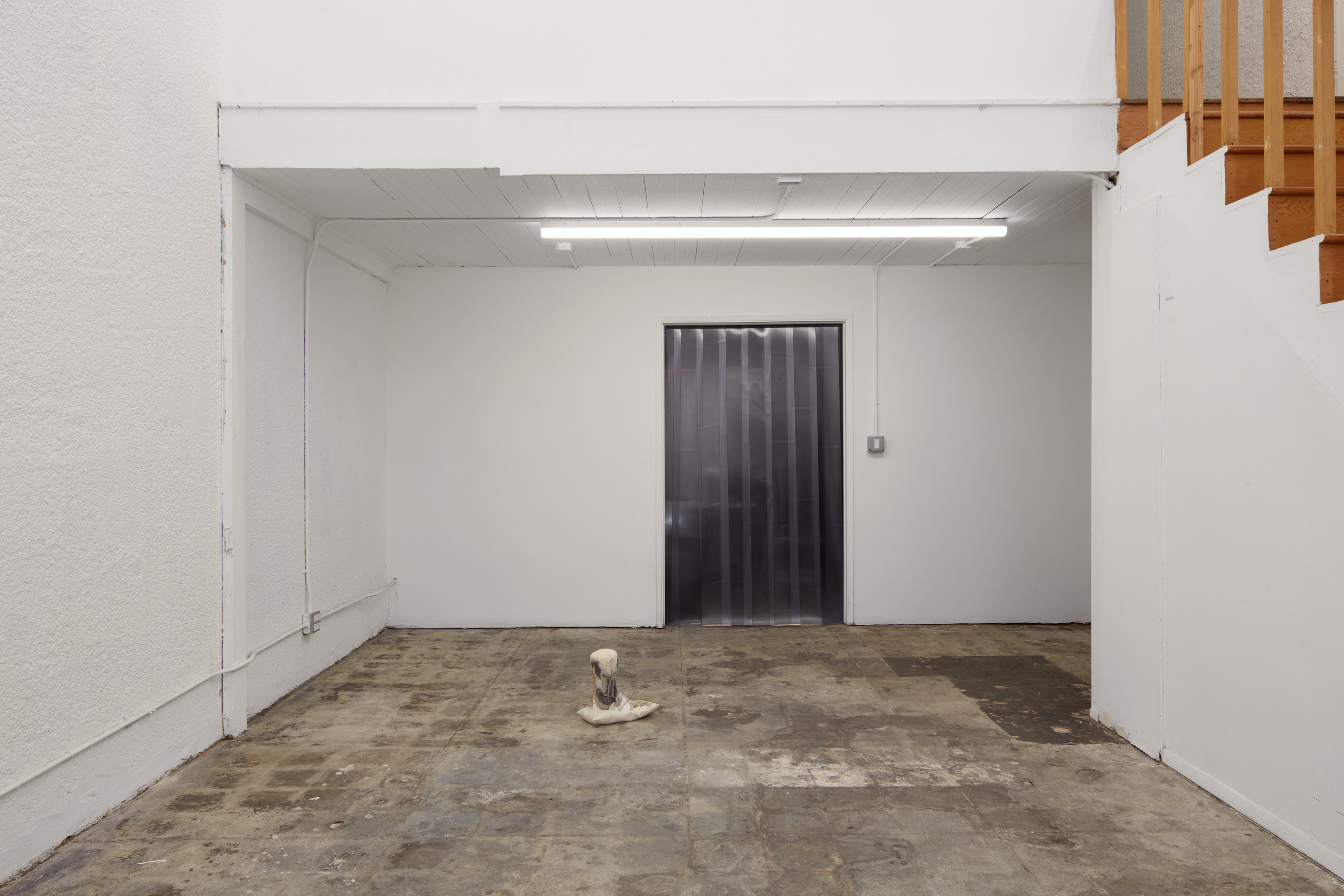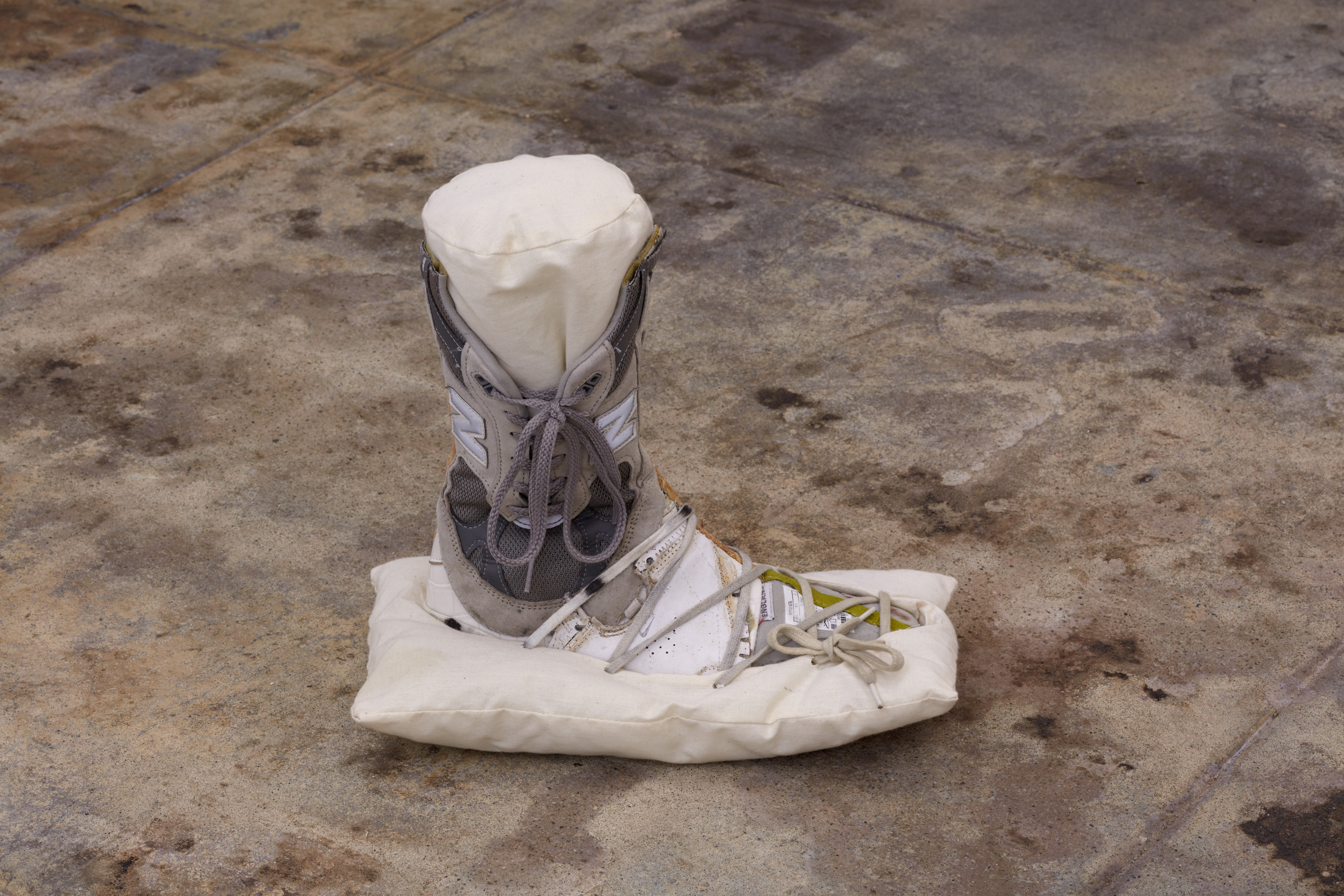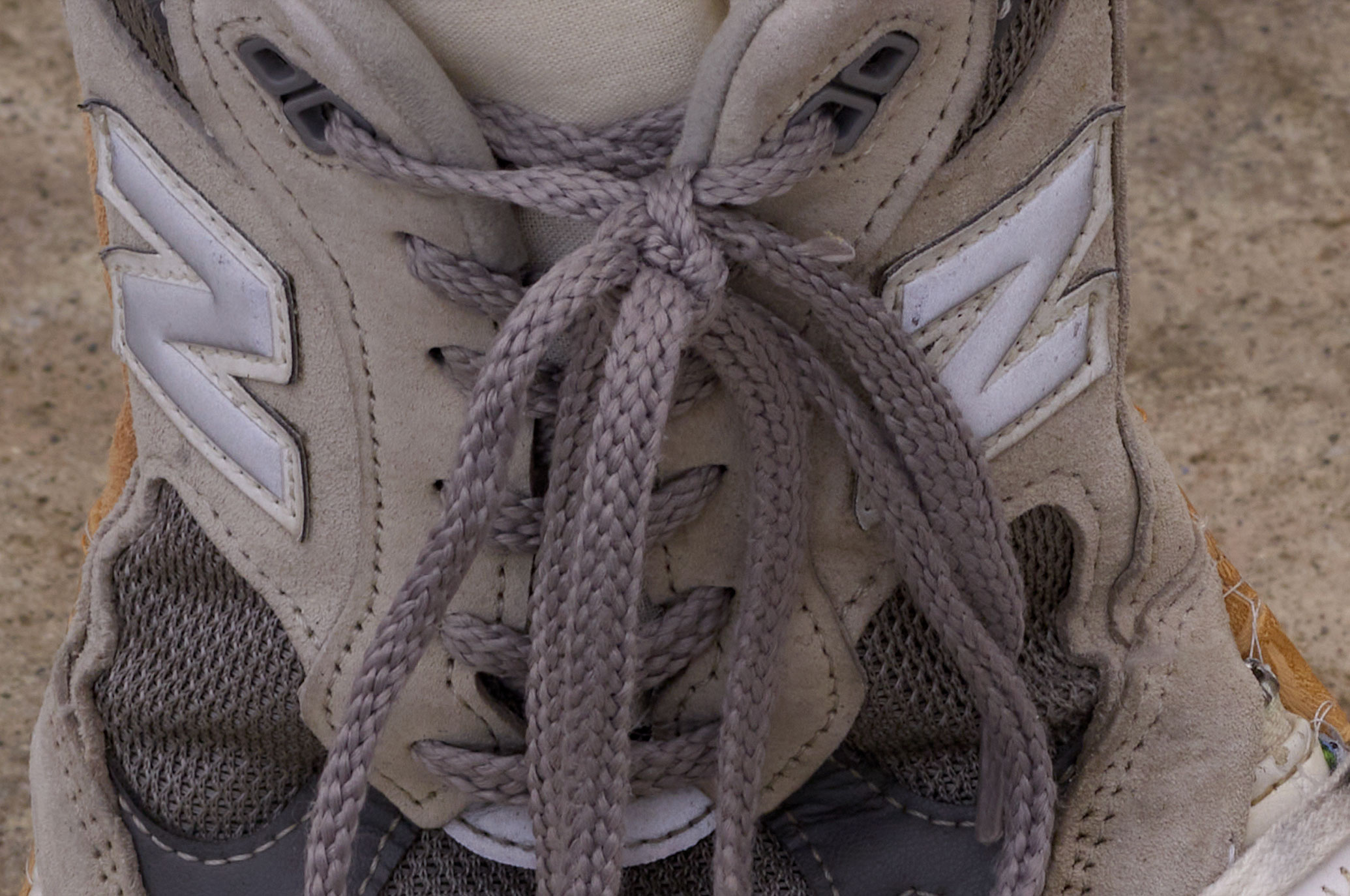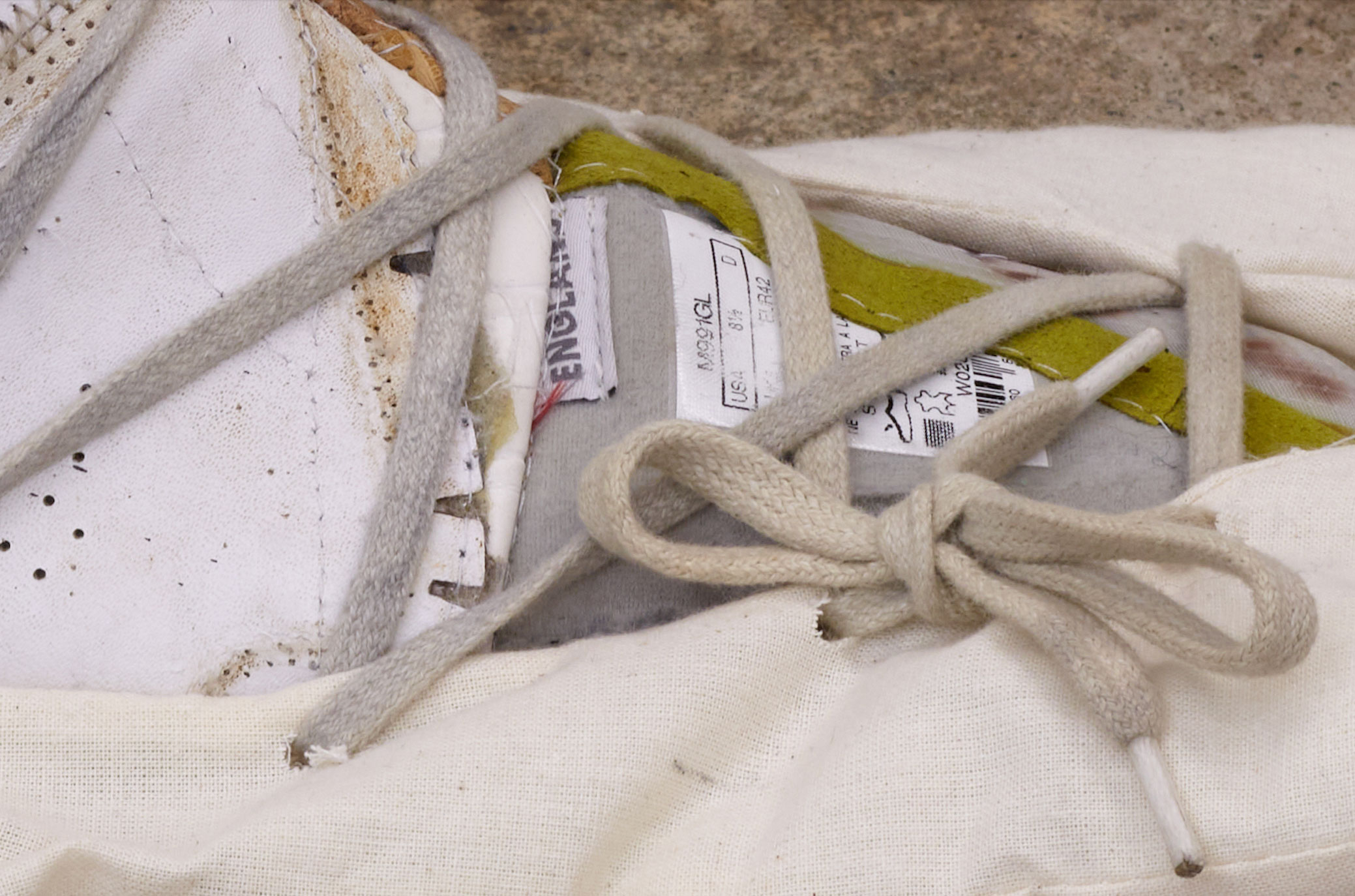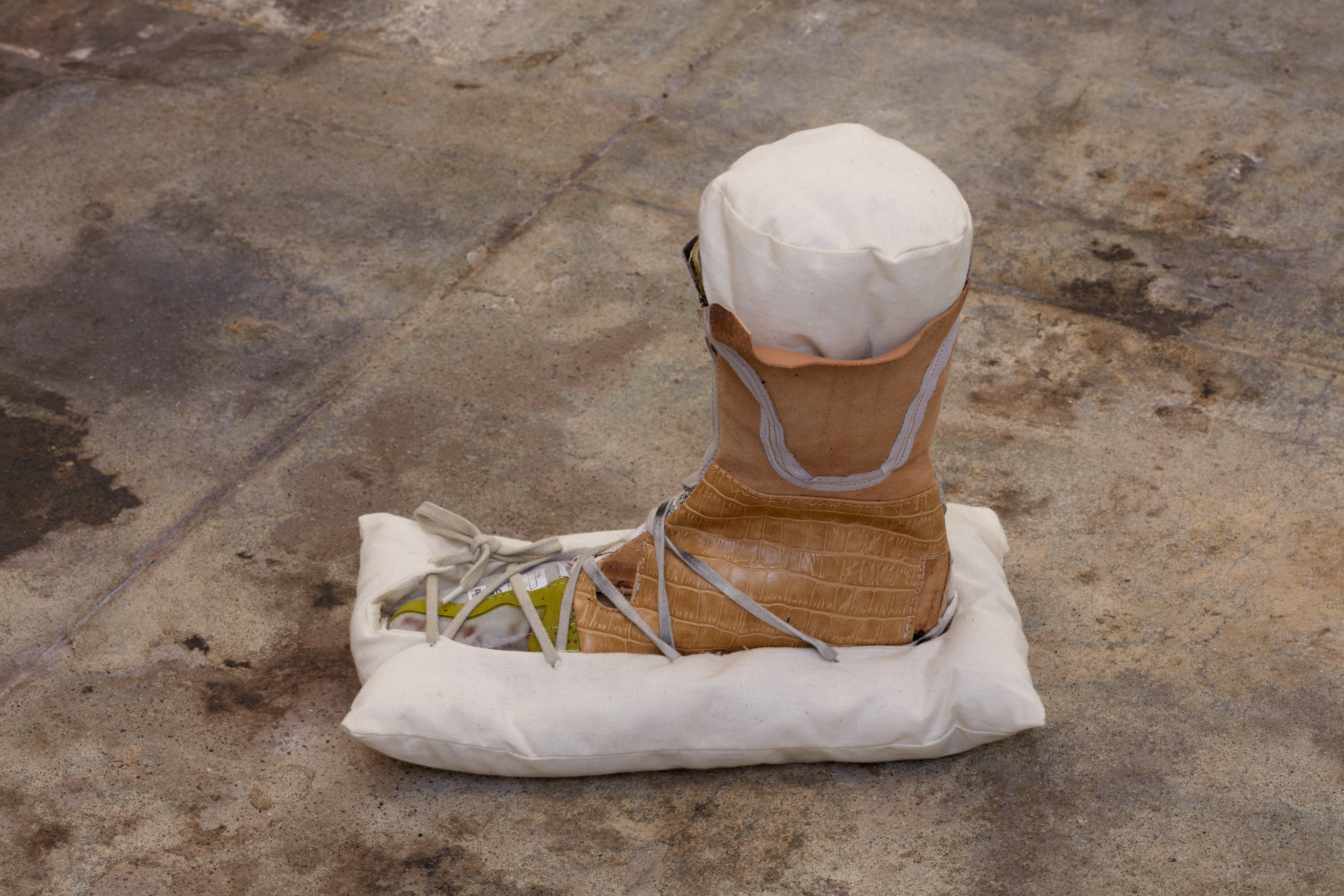Ehrlich Steinberg is pleased to present Science and Worms, a solo exhibition by Tenant of Culture, the moniker of Amsterdam-based Dutch artist Hendrickje Schimmel. Continuing her research and exploration into the lifecycle of fashion objects, Tenant of Culture presents a new series of works focusing on the mechanics and technology of maintenance and care within fashion and institutional archives. Science and Worms marks the artist’s first solo exhibition in the US within a commercial gallery and coincides with Host, the artist’s first solo exhibition within a US institution, taking place at the Contemporary Austin in Texas.
Trained in garment-making, Tenant of Culture’s practice grapples with the conceptual and material realities of clothing and wearable objects within historic and contemporary culture. The artist considers how the symbolic framework which treats fashion as a dematerialized and ephemeral phenomenon—through the understanding of its significance as perpetual ‘trend’ or ‘style’—ignores the physical pressures of production and labor that underscore much of the fashion industry. This can be seen through fashion’s intricate systems of resource extraction, manufacturing, consumption, disposal and decomposition. Considering these parameters, Tenant of Culture positions the fashion object in a state between two ‘end scenarios’. The first presumes the object’s disintegration: the garment will eventually be discarded, potentially entering various systems of secondary markets (such as charitable donations) before its inevitable material decay in landfills or burning pits. The second presumes the object’s preservation: the garment will be carefully maintained within a specialized archive to represent a particular and significant moment in time and culture.
Taking its title from Baudrillard’s theory on the preservation and decay of cultural artifacts, Science and Worms examines how fashion and institutional archives arrest the natural disintegration of garments, preserving them as static representations of their original form and meaning. The artist considers how varying value systems position fashion objects between discardable waste material and archivable cultural symbols, exploring how these networks of worth are mediated or interrupted through both professional and amateur methods of preservation and care. While an institutional curator might impose science-based conservation methods such as light and temperature controlled environments, acid free protective covers and supportive cushioning, a consumer might utilize more improvised methods such as plastic over shoes in the rain, shrink wrapping and moth bags.
On the walls of the gallery, a series of constructed Tyvek garment bags feature carefully hand-sliced tears by the artist. These bags, typically used to protect high value clothing in fashion and museum archives, are now rendered functionless. Through the repetitive cuts, graphic t-shirts or sweaters become visible, displaying ubiquitous iconography such as ‘New York’ or generic slogans in bold colors. Using a traditional decorative stitching technique, the artist has fused the bag and garment together. The mass-produced inner tops, not normally considered of any archival value, are inversely repositioned and stored within materials usually reserved for distinct, rarified objects.
In Receptacles, a new series of shoe sculptures, Tenant of Culture further explores the technologies of storage utilized by fashion archives. Taking the physical archival systems that are used to protect institutionalized footwear, the artist de- and re-constructs these works, incorporating various storage methods into the design of the shoes themselves. Custom-made cushions, usually created to protect shoes from damage in their box, become perfectly fitted and comfortable looking soles; a boot is made from rubber shoe covers wrapped around patches of formerly discarded shoes; stacked parts of high heels are given shape and protection by a hand-stitched plastic cover. By turning materials used in the maintenance of objects into structural components, Tenant of Culture makes preservation a point of failure: each intervention both sustains and negates the purpose of the original item.
In the back gallery, Sabotage in Acrylic (series nr 3) displays the contemporary trend of artificial distress within mass-produced fashion. The restored sweater, with its Zara tags still attached, features the brand’s machine-made gaping holes as if to imply arduous wear and tear produced by decades of use. In contrast, Tenant of Culture, using the now uncommon reparative technique known as darning, has meticulously hand-restored the garment, filling in its constructed holes. The piece highlights the often hidden contradictions within fashion’s manipulation of time: an industrial knitting machine can manufacture ‘pre-worn’ clothing in seconds, while the artist’s process of reversing that distress requires hours of meticulous handwork.
-
Tenant of Culture received a BA in Womenswear from ArtEZ Hogeschool voor de Kunsten, Zwolle in 2012 and an MA in Mixed Media from Royal College of Art, London in 2016. The artist has had major institutional exhibitions including Host at The Contemporary Austin, Austin, TX (2025); IN SITU at Museum of Contemporary Art, Antwerp, BE (2023) and Soft Acid at Camden Art Centre, London, UK (2022). Soft Acid was also exhibited as part of the British Textile Biennial in 2023. Other recent exhibitions include Insides Out at Kunstverein Göttingen, Göttingen, DE (2023); Beautiful Repair at Copenhagen Contemporary, Copenhagen, DK (2023); Good Signal at Duarte Sequeira, Braga, PT (2023); Piece(d) Work at Ivory Tars, Glasgow, SCO (2022); Post- digital Intimacy at the National Gallery Prague, Prague, CZ (2022); Eternally Yours at Somerset House, London, UK (2022) and Testament at the Goldsmiths Centre for Contemporary Art, London, UK (2022). Tenant of Culture’s work is in the collections of the Fries Museum, Leeuwarden, NL; the Stedelijk Museum, Amsterdam, NL and The Pier Arts Centre, Orkney, SCO.
Installation view. Science and Worms by Tenant of Culture, 2025.
Installation view. Science and Worms by Tenant of Culture, 2025.
Tenant of Culture, Receptacles (6, series), 2025. Recycled shoes, plastic, tape, thread, 9 x 8.25 x 4 in. (22.9 x 21 x 10.2 cm).
Tenant of Culture, Receptacles (6, series), 2025. Recycled shoes, plastic, tape, thread, 9 x 8.25 x 4 in. (22.9 x 21 x 10.2 cm).
Detail. Tenant of Culture, Receptacles (6, series), 2025. Recycled shoes, plastic, tape, thread, 9 x 8.25 x 4 in. (22.9 x 21 x 10.2 cm).
Tenant of Culture, New York, 2025. Tyvek, second hand sweater, thread, hanger, 44 x 25 in. (111.8 x 63.5 cm).
Installation view. Science and Worms by Tenant of Culture, 2025.
Tenant of Culture, Finding the Inner Energy, 2025. Tyvek, second hand sweater, thread, hanger, 44 x 25 in. (111.8 x 63.5 cm).
Detail. Tenant of Culture, Finding the Inner Energy, 2025. Tyvek, second hand sweater, thread, hanger, 44 x 25 in. (111.8 x 63.5 cm).
Tenant of Culture, Receptacles (3, series), 2025. Recycled shoes and accessories, rubber, glue, thread, 16 x 11.5 x 4.25 in. (40.6 x 29.2 x 10.8 cm).
Detail. Tenant of Culture, Receptacles (3, series), 2025. Recycled shoes and accessories, rubber, glue, thread, 16 x 11.5 x 4.25 in. (40.6 x 29.2 x 10.8 cm).
Detail. Tenant of Culture, Receptacles (3, series), 2025. Recycled shoes and accessories, rubber, glue, thread, 16 x 11.5 x 4.25 in. (40.6 x 29.2 x 10.8 cm).
Tenant of Culture, Receptacles (3, series), 2025. Recycled shoes and accessories, rubber, glue, thread, 16 x 11.5 x 4.25 in. (40.6 x 29.2 x 10.8 cm).
Tenant of Culture, Receptacles (2, series), 2025. Shoe soles, tyvek, stuffing, laces, 8.5 x 10.5 x 4 in. (21.6 x 26.7 x 10.2 cm).
Detail. Tenant of Culture, Receptacles (2, series), 2025. Shoe soles, tyvek, stuffing, laces, 8.5 x 10.5 x 4 in. (21.6 x 26.7 x 10.2 cm).
Tenant of Culture, Receptacles (2, series), 2025. Shoe soles, tyvek, stuffing, laces, 8.5 x 10.5 x 4 in. (21.6 x 26.7 x 10.2 cm).
Tenant of Culture, Receptacles (2, series), 2025. Shoe soles, tyvek, stuffing, laces, 8.5 x 10.5 x 4 in. (21.6 x 26.7 x 10.2 cm).
Detail. Tenant of Culture, Receptacles (2, series), 2025. Shoe soles, tyvek, stuffing, laces, 8.5 x 10.5 x 4 in. (21.6 x 26.7 x 10.2 cm).
Installation view. Science and Worms by Tenant of Culture, 2025.
Tenant of Culture, Other, 2025. Tyvek, second hand t-shirt and bustier, thread, hanger, 44 x 25 in. (111.8 x 63.5 cm).
Detail. Tenant of Culture, Other, 2025. Tyvek, second hand t-shirt and bustier, thread, hanger, 44 x 25 in. (111.8 x 63.5 cm).
Tenant of Culture, Receptacles (9, series), 2025. Recycled shoes and accessories, unbleached cotton, stuffing, rubber, lace, material tape, buckles, 12 x 5.5 x 5 in. (30.5 x 14. x 12.7 cm).
Detail. Tenant of Culture, Receptacles (9, series), 2025. Recycled shoes and accessories, unbleached cotton, stuffing, rubber, lace, material tape, buckles, 12 x 5.5 x 5 in. (30.5 x 14. x 12.7 cm).
Tenant of Culture, Receptacles (9, series), 2025. Recycled shoes and accessories, unbleached cotton, stuffing, rubber, lace, material tape, buckles, 12 x 5.5 x 5 in. (30.5 x 14. x 12.7 cm).
Installation view. Science and Worms by Tenant of Culture, 2025.
Tenant of Culture, Speed Way, 2025. Tyvek, second hand t-shirt, thread, hanger, 44 x 25 in. (111.8 x 63.5 cm).
Detail. Tenant of Culture, Speed Way, 2025. Tyvek, second hand t-shirt, thread, hanger, 44 x 25 in. (111.8 x 63.5 cm).
Tenant of Culture, Receptacles (1, series), 2025. Shoe sole, rubber, thread, 12 x 4.75 x 2 in. (30.5 x 12.1 x 5.1 cm).
Tenant of Culture, Receptacles (1, series), 2025. Shoe sole, rubber, thread, 12 x 4.75 x 2 in. (30.5 x 12.1 x 5.1 cm).
Detail. Tenant of Culture, Receptacles (1, series), 2025. Shoe sole, rubber, thread, 12 x 4.75 x 2 in. (30.5 x 12.1 x 5.1 cm).
Tenant of Culture, Sabotage in Acrylic (series nr 3), 2025. Zara knitted pullover, merino wool yarn, 30 x 18 in. (76.2 x 45.7 cm).
Tenant of Culture, Sabotage in Acrylic (series nr 3), 2025. Zara knitted pullover, merino wool yarn, 30 x 18 in. (76.2 x 45.7 cm).
Detail. Tenant of Culture, Sabotage in Acrylic (series nr 3), 2025. Zara knitted pullover, merino wool yarn, 30 x 18 in. (76.2 x 45.7 cm).
Detail. Tenant of Culture, Sabotage in Acrylic (series nr 3), 2025. Zara knitted pullover, merino wool yarn, 30 x 18 in. (76.2 x 45.7 cm).
Detail. Tenant of Culture, Sabotage in Acrylic (series nr 3), 2025. Zara knitted pullover, merino wool yarn, 30 x 18 in. (76.2 x 45.7 cm).
Tenant of Culture, Receptacles (5, series), 2025. Recycled shoes and accessories, unbleached cotton, thread, stuffing, 13 x 6.5 x 12 in. (33 x 16.5 x 30.5 cm).
Tenant of Culture, Receptacles (5, series), 2025. Recycled shoes and accessories, unbleached cotton, thread, stuffing, 13 x 6.5 x 12 in. (33 x 16.5 x 30.5 cm).
Detail. Tenant of Culture, Receptacles (5, series), 2025. Recycled shoes and accessories, unbleached cotton, thread, stuffing, 13 x 6.5 x 12 in. (33 x 16.5 x 30.5 cm).
Detail. Tenant of Culture, Receptacles (5, series), 2025. Recycled shoes and accessories, unbleached cotton, thread, stuffing, 13 x 6.5 x 12 in. (33 x 16.5 x 30.5 cm).
Tenant of Culture, Receptacles (5, series), 2025. Recycled shoes and accessories, unbleached cotton, thread, stuffing, 13 x 6.5 x 12 in. (33 x 16.5 x 30.5 cm).
Photos: Evan Walsh
